Wil reviews the 2019 Merida One-Twenty – a zippy, fun-loving trail bike
Following a 2.5 year gestation period, the Merida One-Twenty arrives on the scene as a brand spanking new trail bike for 2019. Following in the footsteps of the longer travel One-Forty and One-Sixty, the new One-Twenty transitions to a trunnion-mounted rear shock, along with an all-new frame dressed in a contemporary parts package.
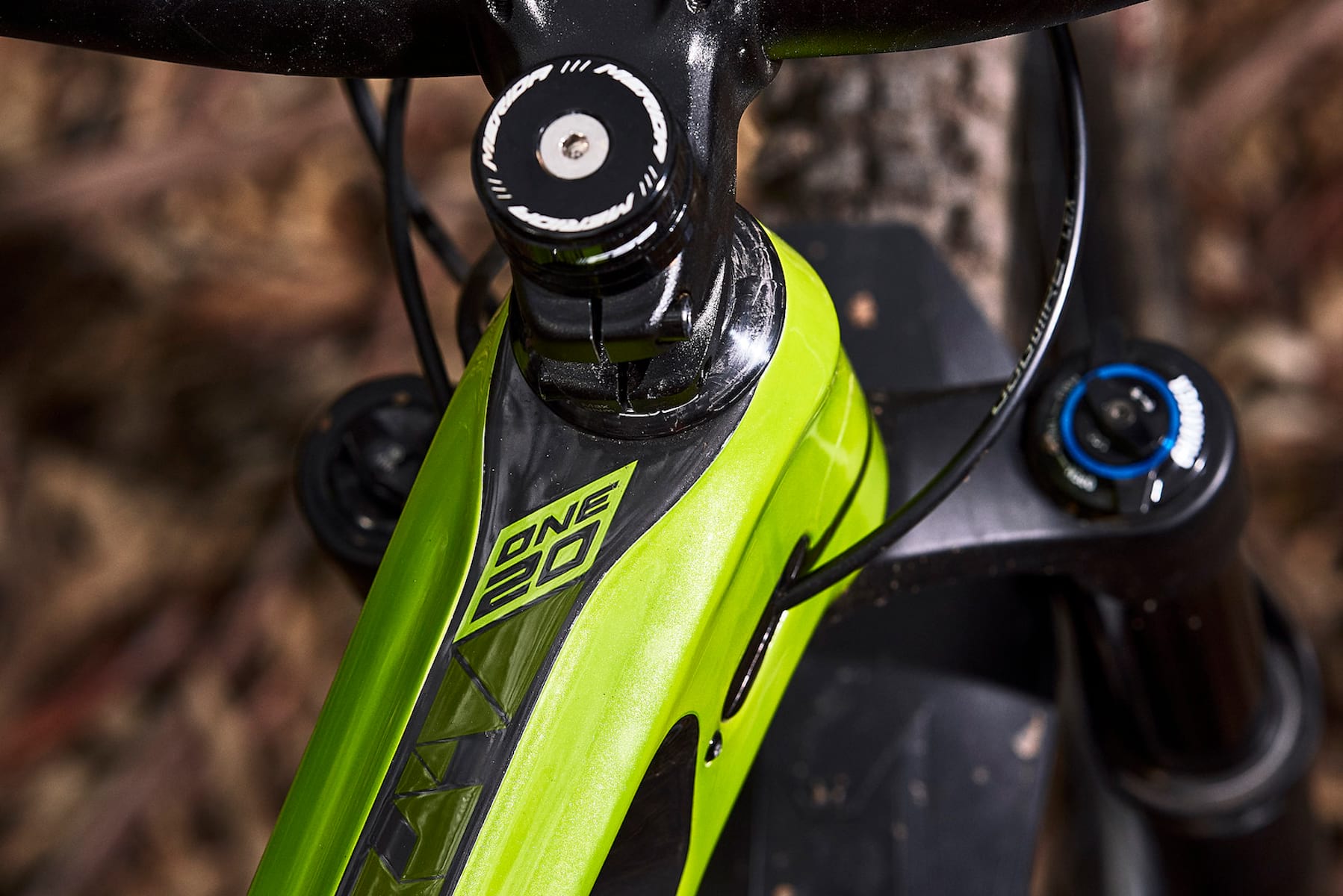
As the speedy trail bike of the range, the One-Twenty is equipped with 120mm of rear suspension travel, a 130mm travel fork and 29in wheels. Its geometry has been massaged for 2019, bringing it up to speed alongside competitors such as the Scott Spark, Specialized Stumpjumper ST, and Giant Trance 29.
Globally, there are eight different models available within the One-Twenty range. Pricing starts at an attractive £,1400 / $1,999 AUD for the entry-level One-Twenty 400. Geometry and the suspension design is mimicked throughout the line, though cheaper models use an alloy frameset, with pricier models getting either a hybrid carbon/alloy or full-carbon frameset.
Sizes range from Small through to X-Large, and select models can also be had with 27.5in wheels in the Small and Medium sizes.
For the past three months, I’ve been testing this model; the One-Twenty 8000, which sits one rung down from the top-tier 9000.
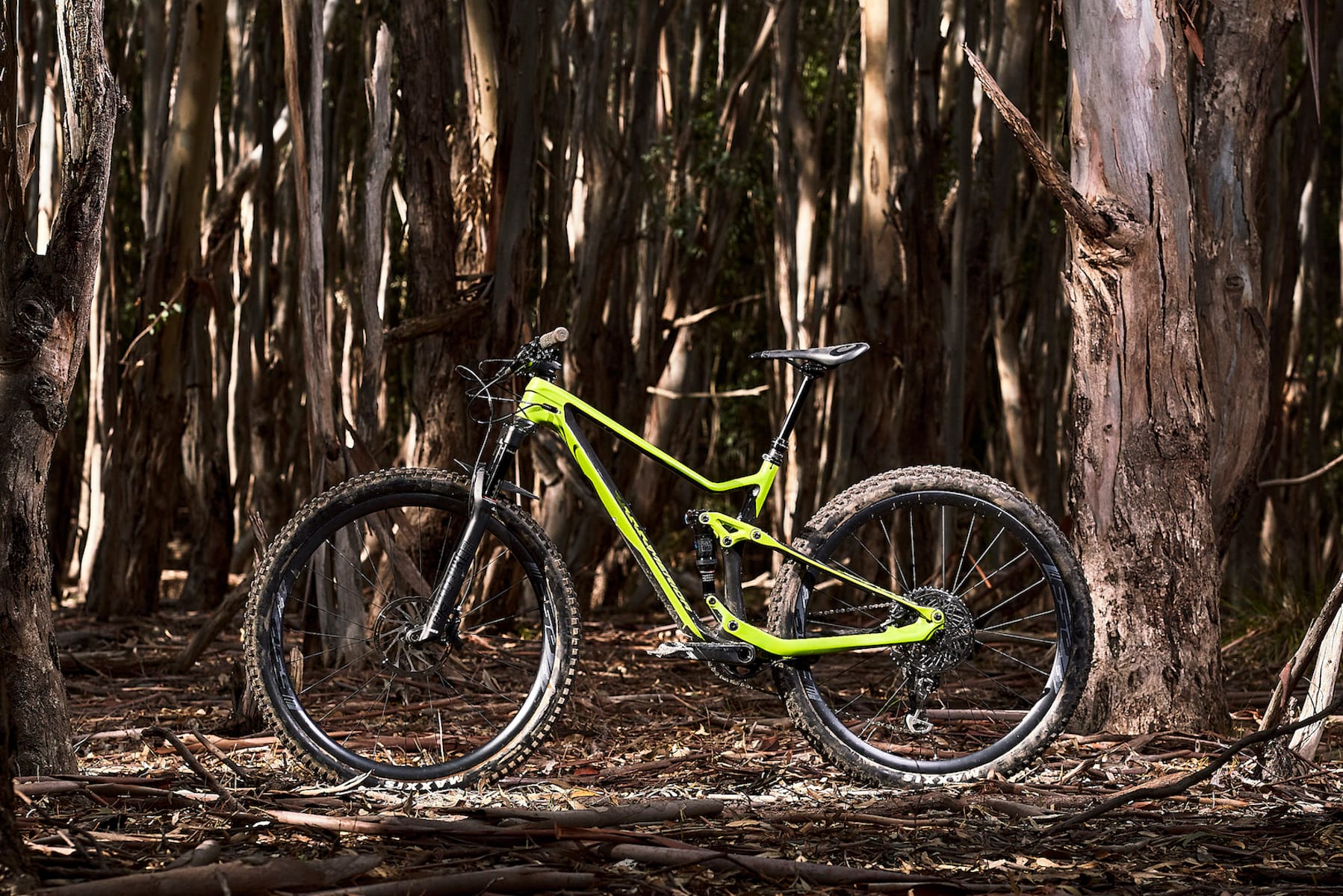
Merida One-Twenty
My memory of past Merida mountain bikes is of overly light, spindly and twitchy lookin’ things with steep head angles, narrow bars and enormously long stems. Upon first inspection of the One-Twenty 8000 however, it would appear that this bike is quite far removed from those Euro marathon racers of old.
For a start there are no remote lockout cables in sight, and there’s also no front mech – the carbon frame is 1x only. Up front is a stout RockShox Pike RCT3 fork and a chunky 2.4in Wide Trail Maxxis Minion DHR II tyre. Powerful SRAM Code RSC 4-piston disc brakes clamp down on 180mm rotors, and the cockpit features 760mm wide riser bars and a 150mm stroke KS dropper post. Grams? What grams?
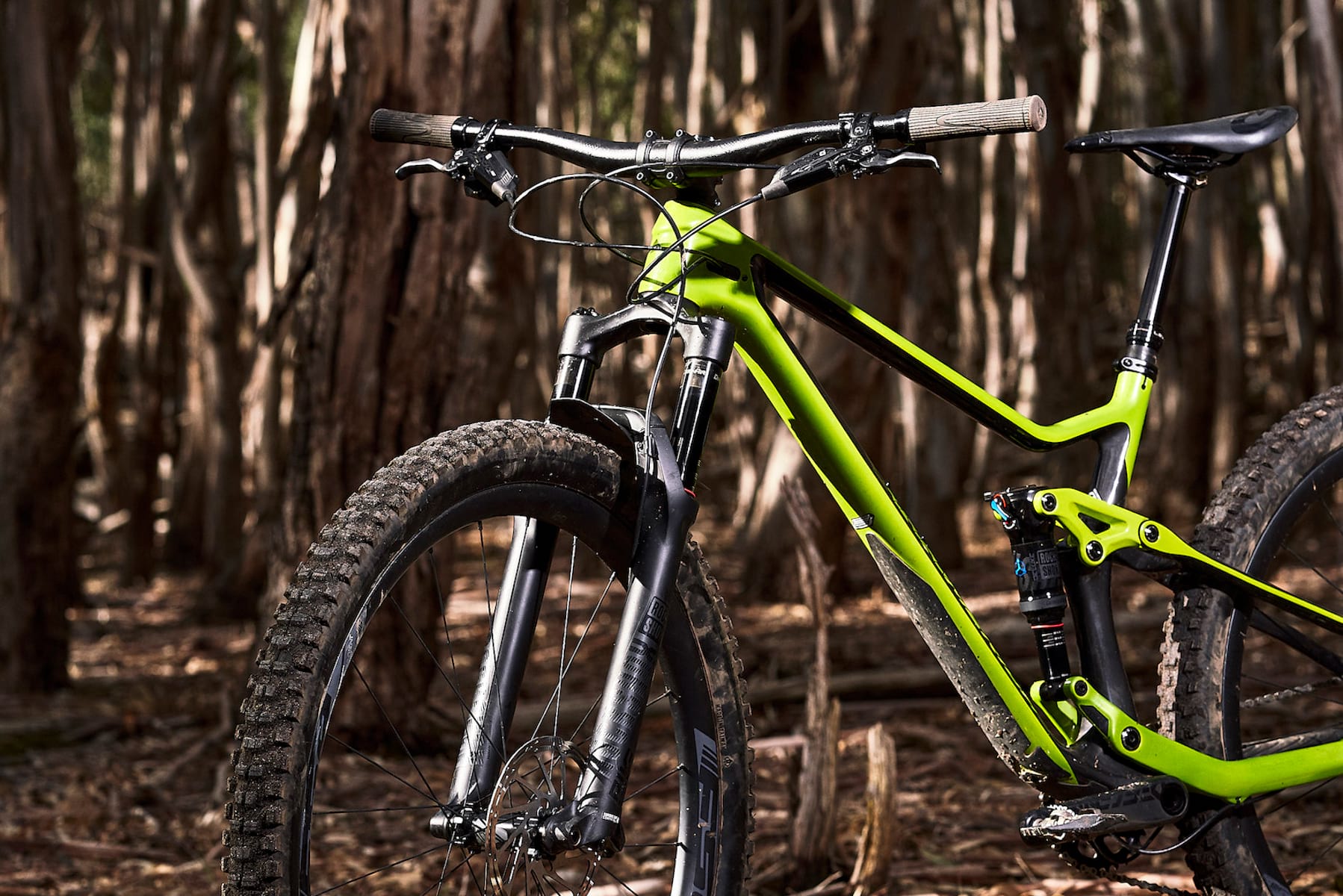
The overall frame shape isn’t a huge departure from the old bike, but subtle changes have been employed to create a stronger, stiffer and more trail-oriented ripper.
Frame reach has increased slightly (435 vs 431mm on the Medium size), while the head angle kicks back almost two full degrees to 67.3°. The effective seat angle steepens to 75.5°, and Merida has nipped the chainstays by 10mm to bring the rear centre length to a reasonably short 435mm. Even with the shorter back end, wheelbases have increased across the board, with the Medium growing 16mm to 1160mm.
Rear travel remains at 120mm, and the shock still ‘floats’ between the alloy rocker plates and the chainstay. Merida calls this its Float Link platform, and in our experience with the One-Sixty and One-Forty models, it’s a design that works very well.
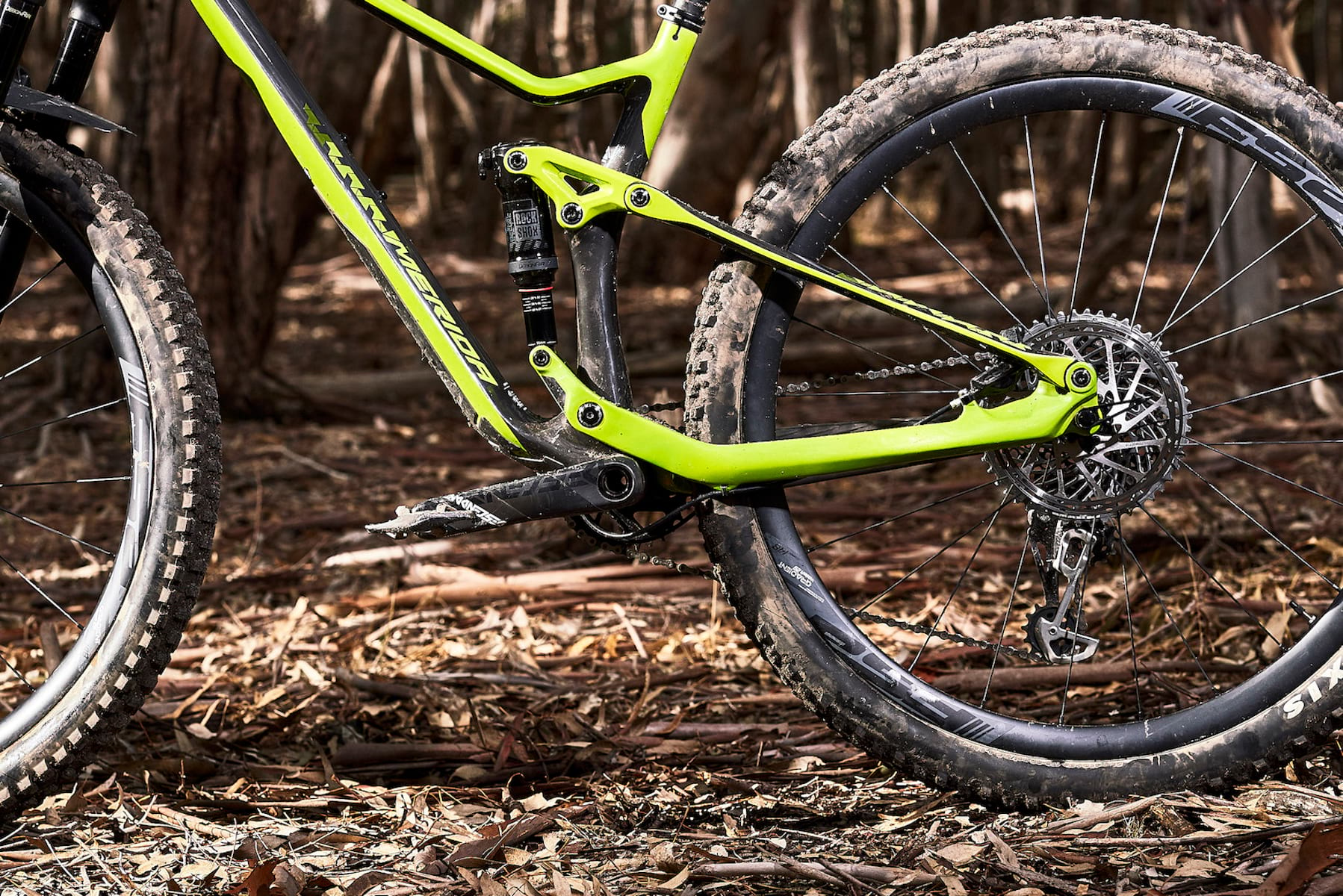
At a claimed 2779g (Medium with shock and hardware) the full carbon CF4 frameset drops 400g over the previous model. More impressive though, is the fact that this frame is nearly a kilo lighter than the all-alloy frame found on the 400/500/600/800 models. That’s a mahoossif weight drop.
Bucking the trend for huge, bubblegum-style carbon fibre, the One-Twenty takes a sharper approach with its small diameter downtube and flattened top tube. The compact mainframe does encroach on water bottle placement though. Even with Merida’s supplied side-entry bottle cage, a 600ml bottle is very cramped in there, and I found it faffy to remove and re-fit while riding. Larger frame sizes will have less of an issue here though.
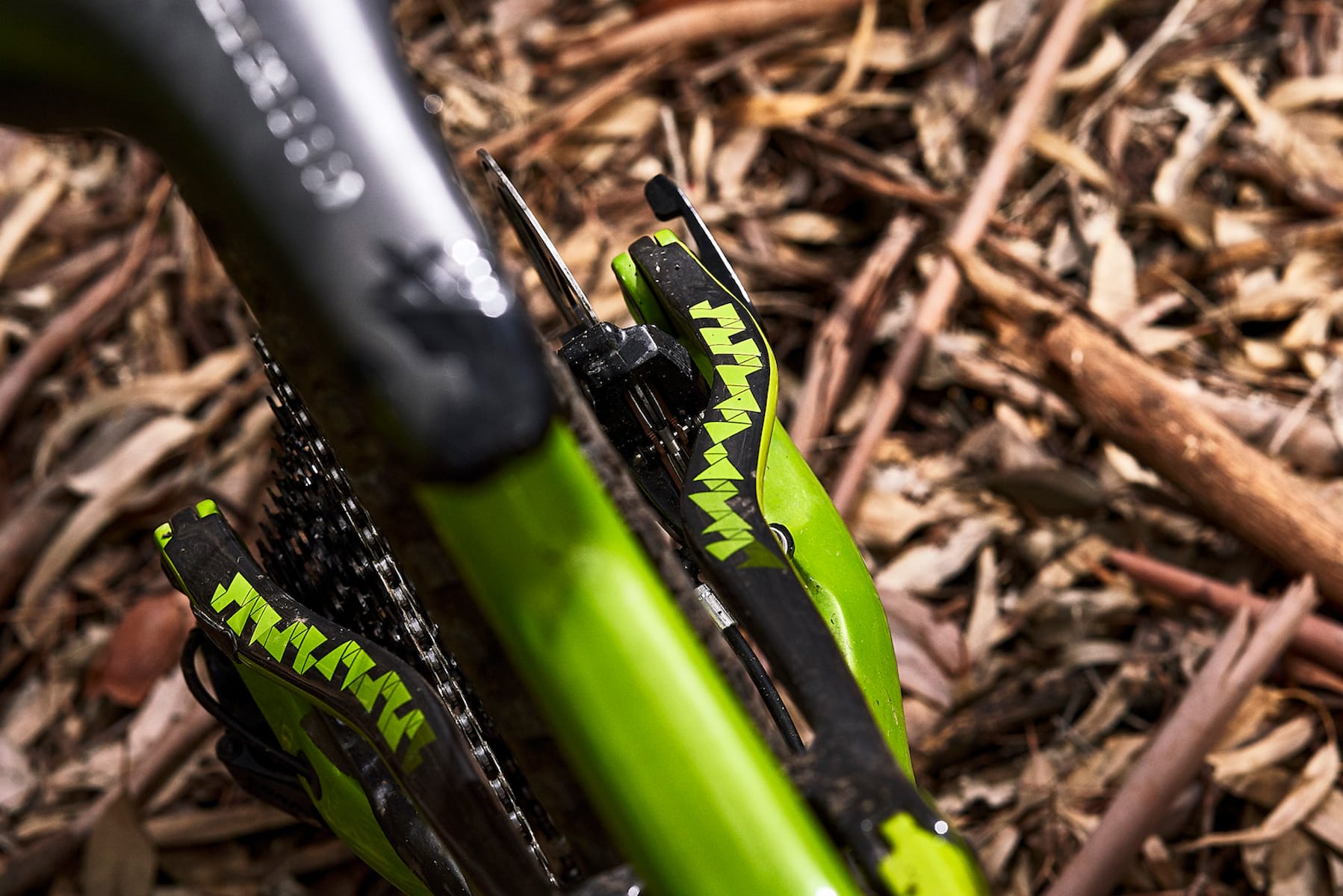
The back end cuts a narrow stance behind the bottom bracket in order to minimise heel strike. Even with flat pedals, I had no rubbing at all with my size 45 clobbers. The flip-side is that tyre clearance isn’t huge, and Merida states that 2.35in is the officially the biggest you can run in the back end. I tried a 2.4in Bontrager XR4, which fitted fine. However, if you’re expecting new-school 2.6in tyres or 27.5+ wheels to go in there, you’re best to look elsewhere.
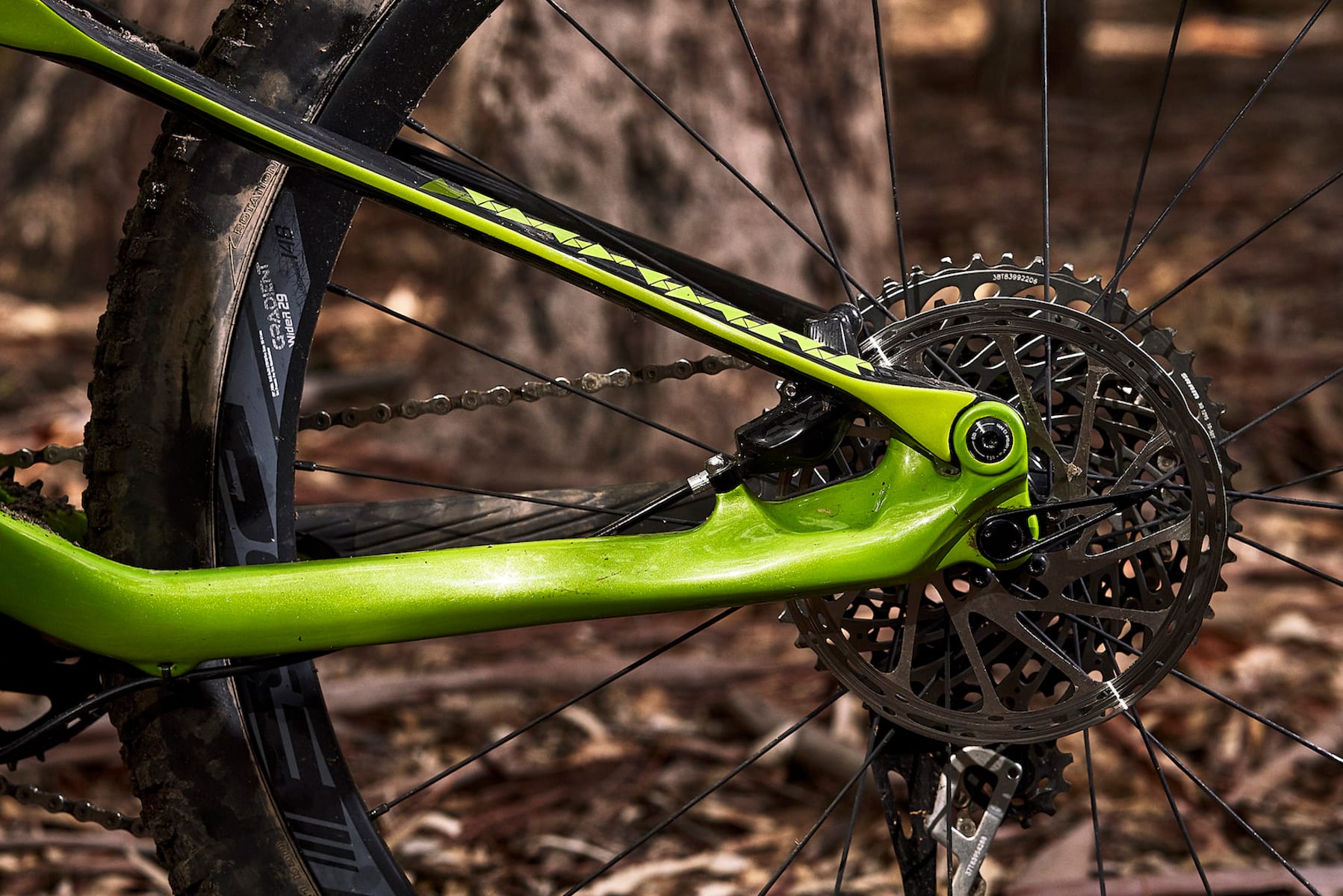
Moving further back towards the dropouts, slender seatstays and big, boxy chainstays flare out dramatically to meet the 148mm wide rear hub. There’s a chunky platform for the rear disc brake calliper, while clevis-style pivot junctions aim to maximise lateral rigidity.
Merida uses its tidy bolt-up cable port system on the One-Twenty chassis to route all the cables and hoses through the downtube. This system allows you to pull the cables taut inside the frame, before clamping them down via the port plugs, thereby eliminating any internal cable slap.

Setting Up
Having built this bike up out of the box, I had few hassles with getting everything setup. The X01 drivetrain in particular, is an absolute pleasure to tune. Tool-free reach and pad contact adjustment on the Code RSC brakes also make it easy to get the levers dialled in for your preferences.
However, while I do appreciate that the rear brake is tucked out of harm’s way behind the seatstay, accessing the post-mount calliper bolts with anything other than a long allen key (like a multi-tool) is difficult.
Also painful is the cable for the KS dropper post, which puts the head of the cable at the handlebar, with a tiny pinch bolt placed awkwardly at the base of the post. Urgh.
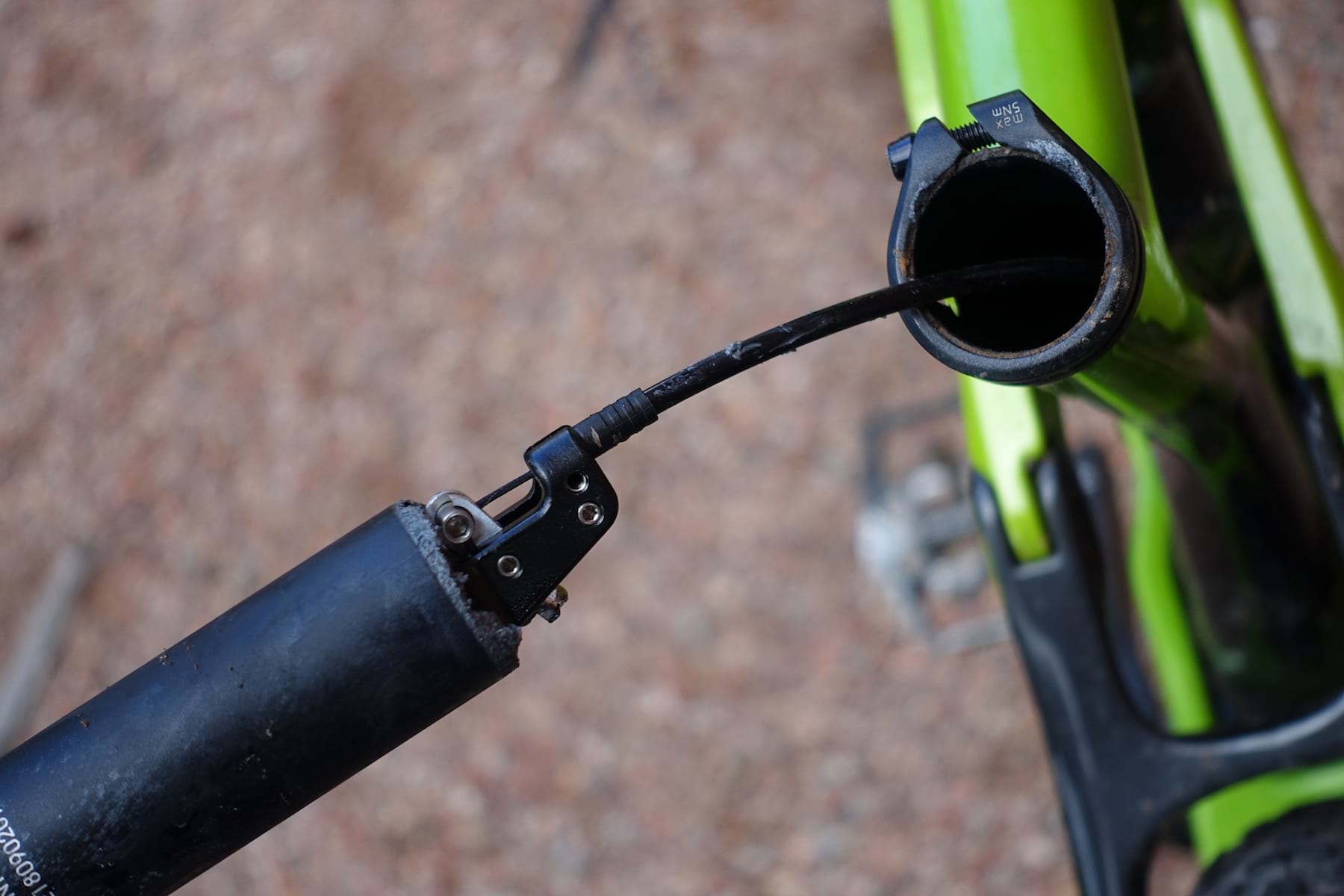
FSA Gradient WideR wheels are new to me, but are well spec’d for the task at hand. They feature hookless carbon rims with a 29mm internal rim width, a buzzy 6-pawl freehub mechanism, chunky straight-pull hubs, and Torque Caps to mate with the Pike’s dropouts. Confirmed weight is 1720g. These were easy to setup tubeless with the stock Maxxis rubber, and I set the front at 19-20psi, with 26psi in the rear. Compared to the DHR II, the lighter Forekaster (800g vs 920g) needs more pressure to keep it stable.
I struggled with the Pike initially. Out of the box, it just didn’t feel as smooth or as lively as the Fox 34s I’ve been riding lately on the Canyon Neuron and Giant Trance 29. Turns out it comes loaded with three Bottomless Tokens from the factory, which was making it feel overly progressive and firm.
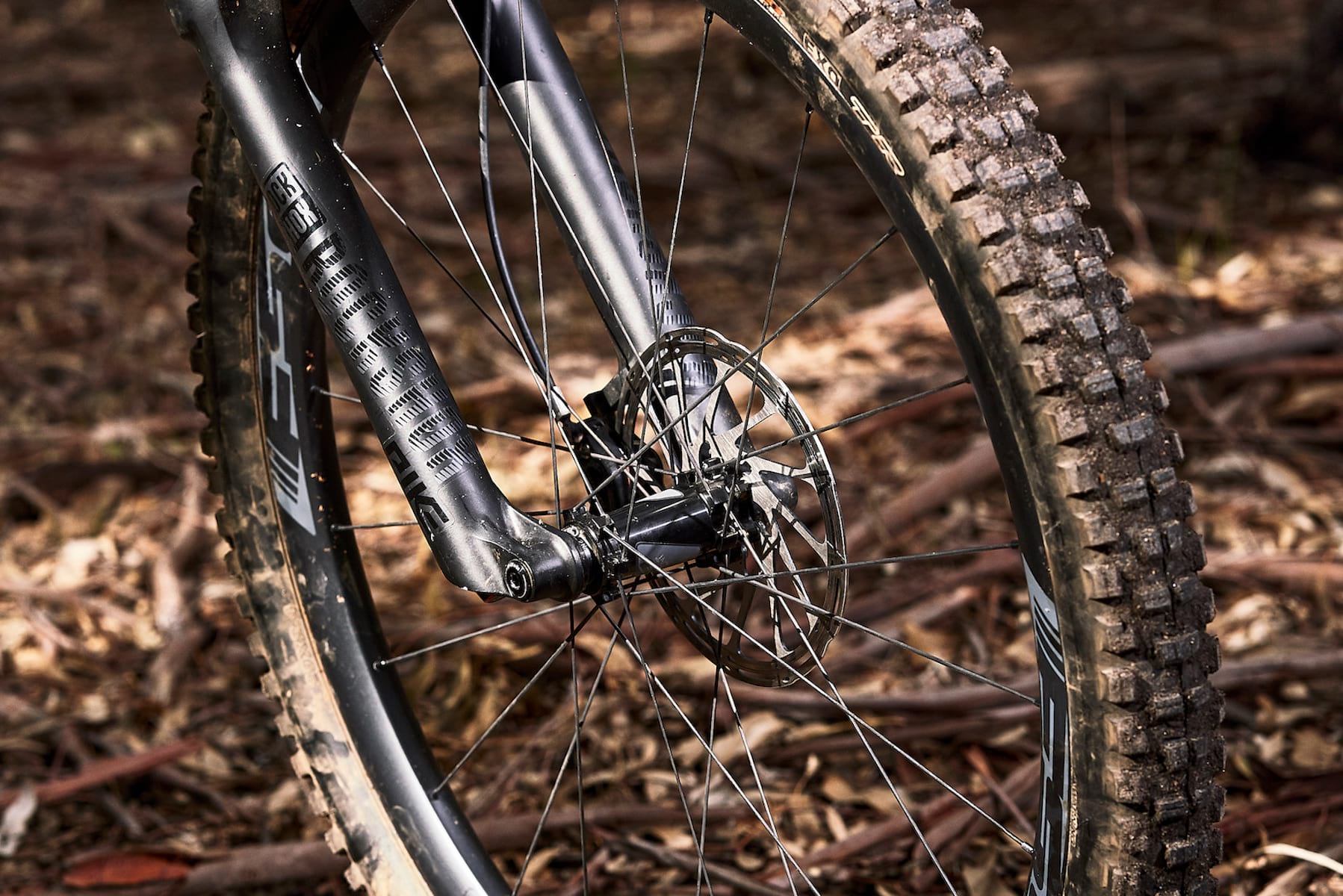
Over the course of a few test rides, I removed one Token at a time, until there were none left inside the DebonAir spring. This increase in volume improved access to the end of the travel with better activity throughout, which allowed me reduce the sag and keep it riding higher up in its stroke. It also took a good couple of months before it bedded in fully, though by the end of the test it was feeling as supple as the back end of the bike.
As per RockShox’ guidelines, I set the pressure to 83psi for my 70kg riding weight, or about 28% static sag while standing on the pedals. Rebound was one click on the slower side (8/18 clicks) and I set the low-speed compression dial anywhere between 6-10 clicks depending on trail conditions.
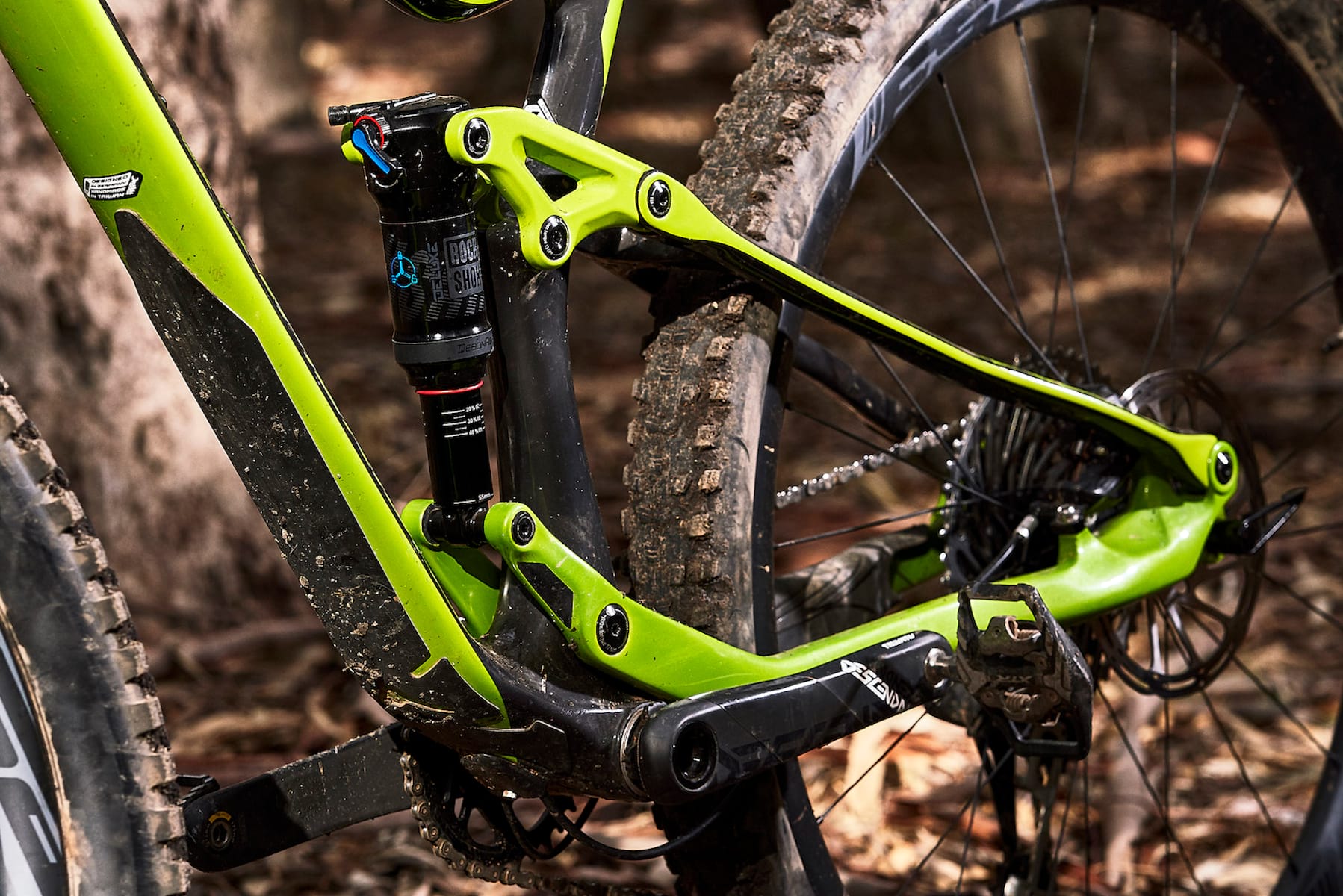
Merida recommends 30% sag on the rear shock, which is what I started off with. Because the RockShox Deluxe has a big-volume DebonAir can and a long 55mm stroke, it ends up requiring relatively low operating pressures. Just 110psi got me the sag I needed, which is literally half the pressure I was running on the Trance 29. A quick shout-out here to RockShox for its handy anodized travel markings on both the fork and shock stanchions – I really, really like these.
Also of note is the slow factory rebound tune. I ran two clicks off the fastest setting (2/10 clicks), otherwise the rear suspension was far too sticky. This won’t be an issue for heavier riders (who require more damping to control higher spring pressures), but it may be an issue for lighter riders.

The Ride
From the very first pedal stroke on the One-Twenty, I’ve been struck by both its all-round approachability and enthusiastic ride quality. This is a brilliant little trail bike.
To start with, the suspension is excellent. The combination of the trunnion bearing mount, floating shock and high volume DebonAir can allows the One-Twenty to ease into its travel comfortably with minimal stiction. The result is a nicely supple off-the-top feel with great sensitivity, and a rapid response to square-edge hits. Certainly compared to the Canyon Neuron CF I tested recently, the One-Twenty’s suspension is floatier and more active.
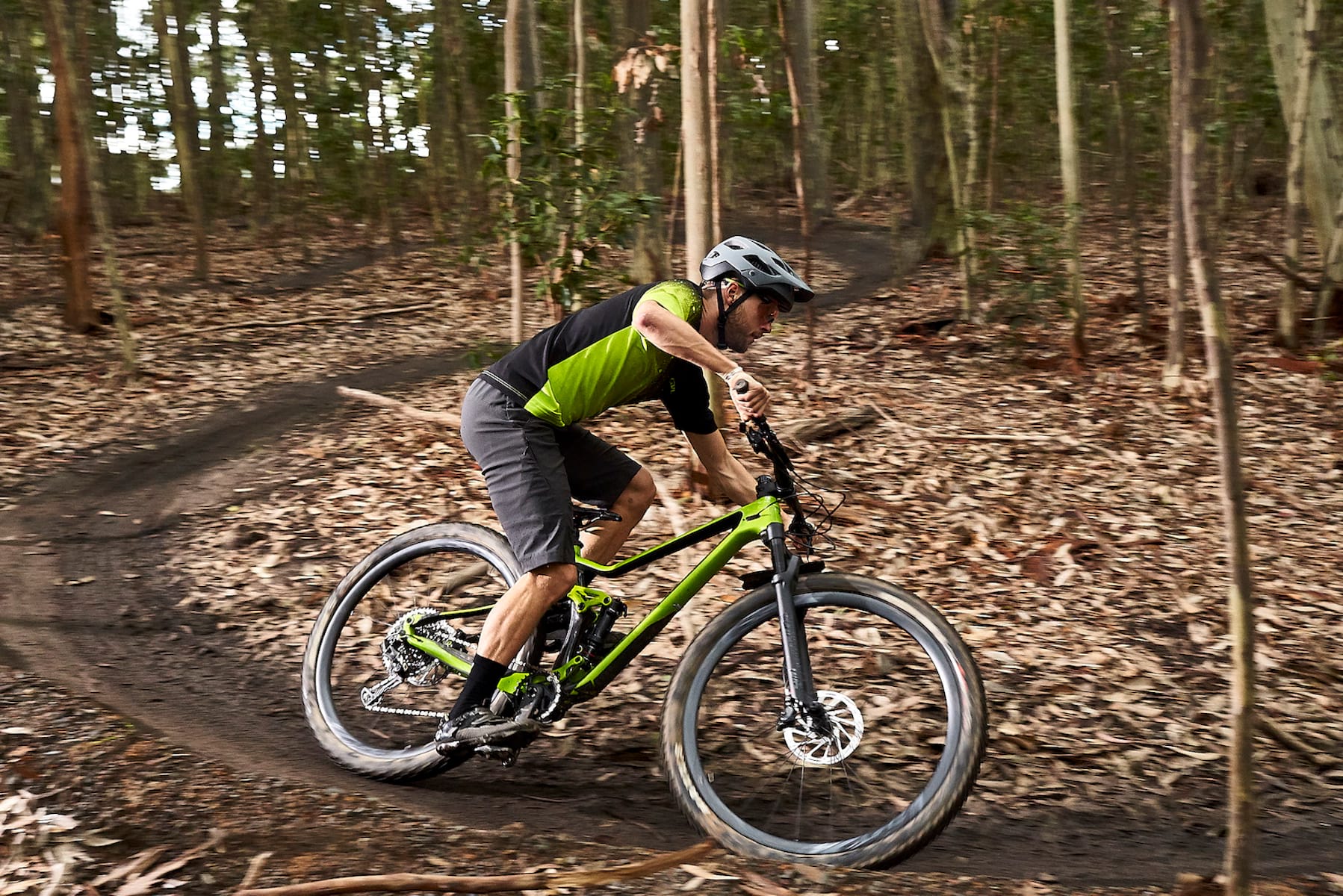
Despite the low-friction shock movement though, the One-Twenty manages to stay sprightly at the pedals. Merida has given it a reasonable amount of anti-squat (just under 100% in the lowest gear while at 30% sag), with the main pivot sitting slightly forward and just above the 32t chainring. The rigid one-piece chainstays also provide notable rigidity, which helps directs maximum pedal power into the rear wheel.
Sure, there’s shock movement when you’re out of the saddle and stabbing at the pedals. But as long as I was seated, I really felt no need to touch the shock’s 3-position compression lever. Even on long road commutes to and from the trails, I kinda forgot about it, leaving the shock in the open position 99% of the time. Oh and for those wondering, neither the fork or shock’s ‘firm’ compression settings are full lockouts – they are literally just a firm setting, but they are balanced.
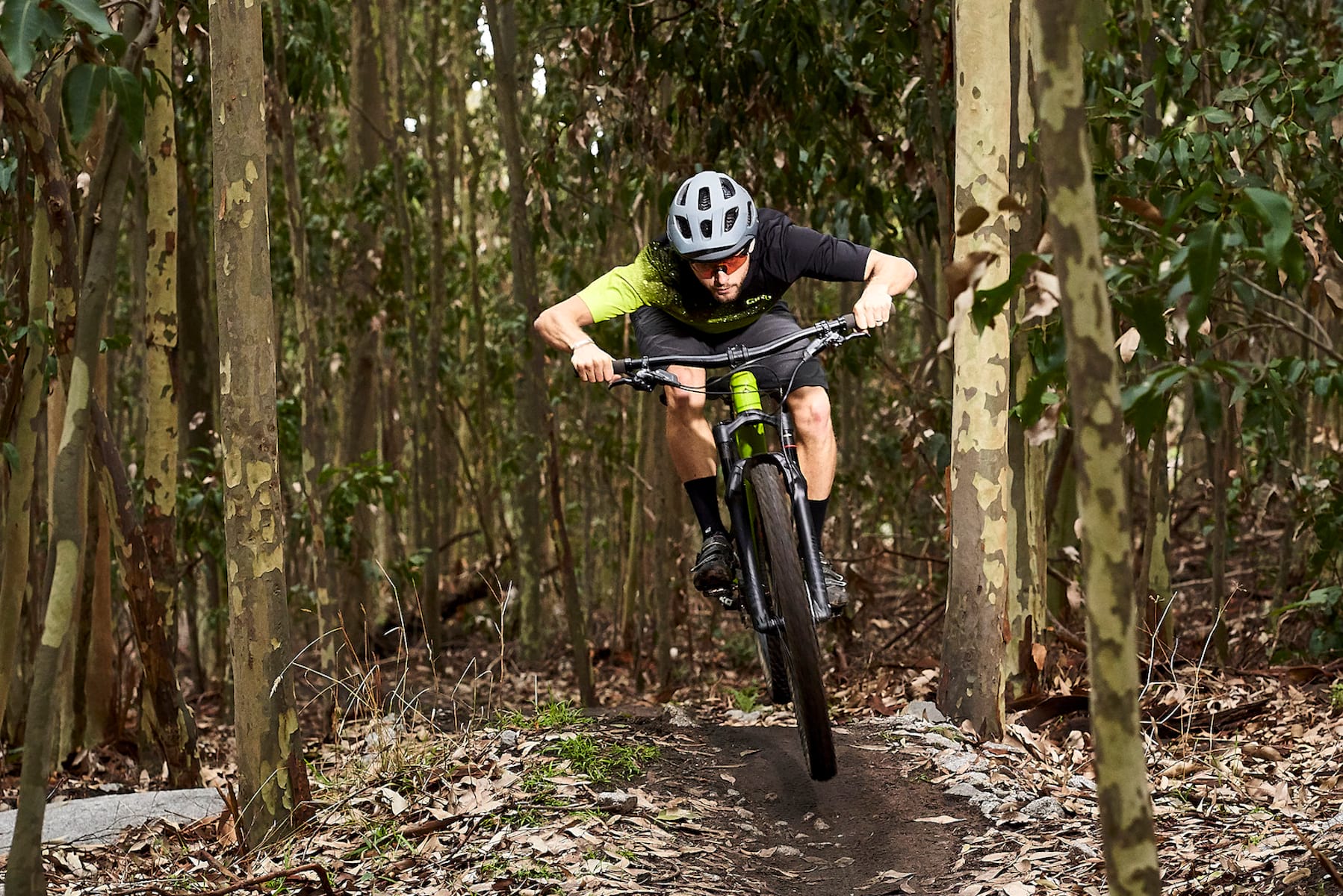
Thanks to the efficient suspension design, stiff frame and carbon wheels, the One-Twenty accelerates and rolls along with pep. At 12.69kg (27.9lb), it weighs about the same as the Giant Trance 29 I’ve also been riding lately, but the One-Twenty is more efficient, more responsive, and just generally sportier overall.
The Trance 29 does have better big-hit control thanks to its piggyback shock, but the One-Twenty still does well to maintain composure throughout its modest 120mm of rear travel. It’s also quite willing to use full travel when asked. However, because it has such a gentle progression towards the end-stroke, it’s almost impossible to tell if you have bottomed out. Despite hitting the straps regularly, I only realised after getting off the bike and discovering the O-ring had fallen off the end of the stanchion.
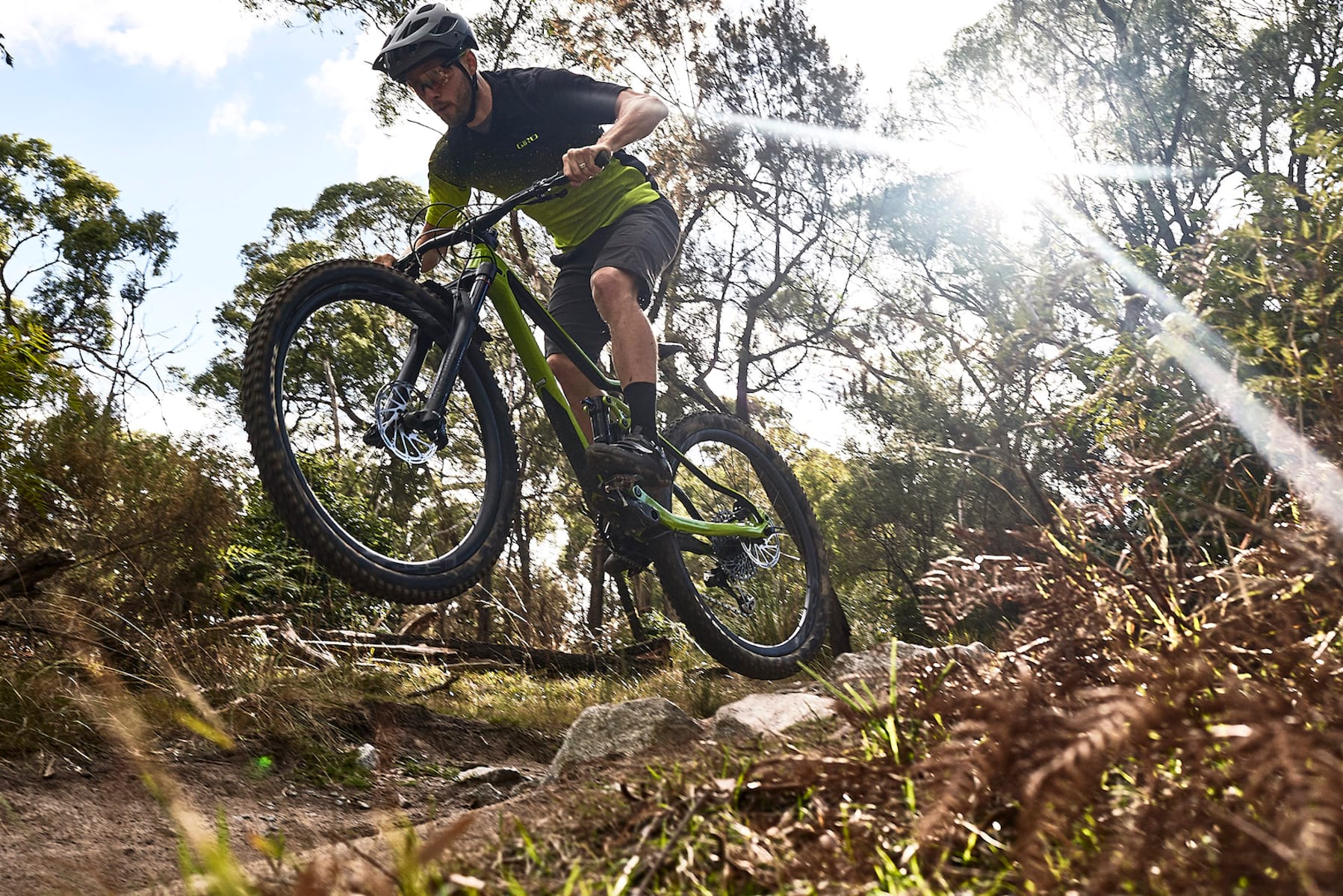
Given the O-ring popping, I decided to increase shock pressure partway through testing. Moving up to 120psi decreased sag to 25%, lifting the ride height and giving the One-Twenty a slightly firmer feel underfoot. This basically eliminated bottoming, while also giving a little more support to push off of when preloading into a jump or drop-off was required.
The sporty theme carries through to the One-Twenty’s handling, which really comes into its own while you’re whipping along tight and twisty singletrack at speed. With the suspension’s responsive mid-stroke and a rapid 6.9° engagement from the rear hub, it picks up quickly when you need to lay down a few hard pedal strokes before pumping through the trail.
With the low 607mm stack height and 40mm BB drop, the One-Twenty frame hovers low to the ground. It isn’t so low as to cause pedal strike issues – I measured the sagged BB height at 295mm. And because the suspension doesn’t wallow, I didn’t find myself clipping pedals often at all.

When pushing hard through successive corners, the carbon chassis exhibits a strong and obvious connection from the grips all the way down to the rear dropouts. According to Merida, this is the stiffest full suspension frame it’s ever produced – even stiffer than the One-Forty and One-Sixty – and I can believe it.
Combined with the not-too-slack geometry, the One-Twenty is fantastically vivid and poppy on the trail. With the saddle slammed down onto the low-slung mainframe, it’s easy to maneouvre, and it’s also very loftable thanks to the short and stiff back end.
While it ain’t quite the straight-line bruiser on the descents that the Trance 29 and Whyte S-120 are, having a Pike and a Minion up front gives you plenty of confidence to dump it down into ugly rock beds with little concern. The hard-working rear suspension keeps the rear wheel tracking through spiky high-speed chatter, though as things get really blurry the One-Twenty does start to pinball around a bit. If you do bite off more than you can chew though, the solid chassis, responsive handling and powerful Code brakes means it’s easier to find an emergency exit.
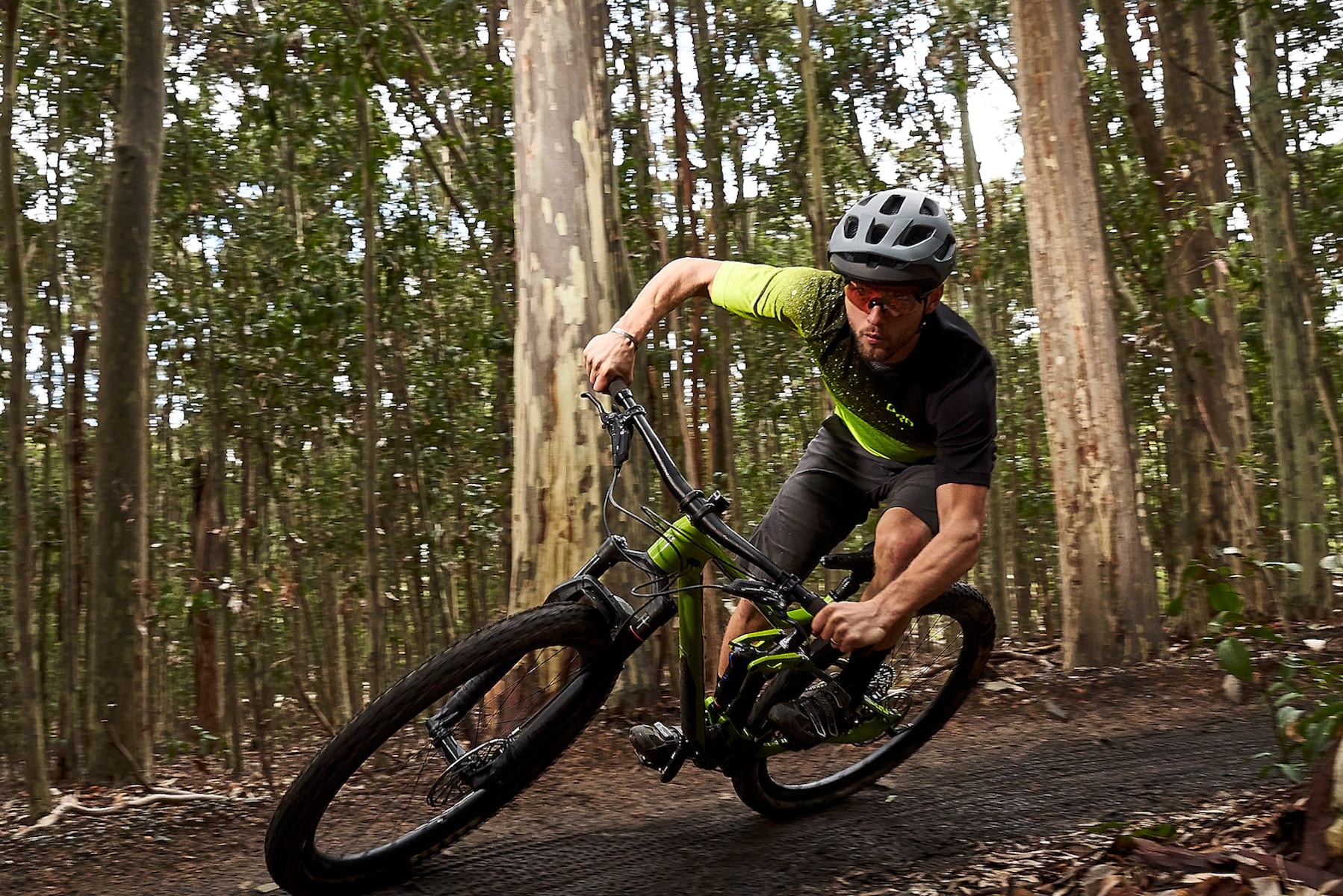
Could it be longer? Slacker? Sure, it could be. And that would certainly help to keep it more stuck-down when going properly flat-out downhill. Personally I don’t think it would be worth the tradeoff to the One-Twenty’s spry handling though, which is currently one of its standout characteristics.
XC Rippin’
To see how the One-Twenty would fare in some more pedally long-distance applications, I took it along a 65km point-to-point backcountry ride along the Goldfields Track. I also strapped on a race plate to take part in the 50km category at this year’s Golden Triangle Epic in my hometown of Bendigo, where I somehow managed to nab a top-15.
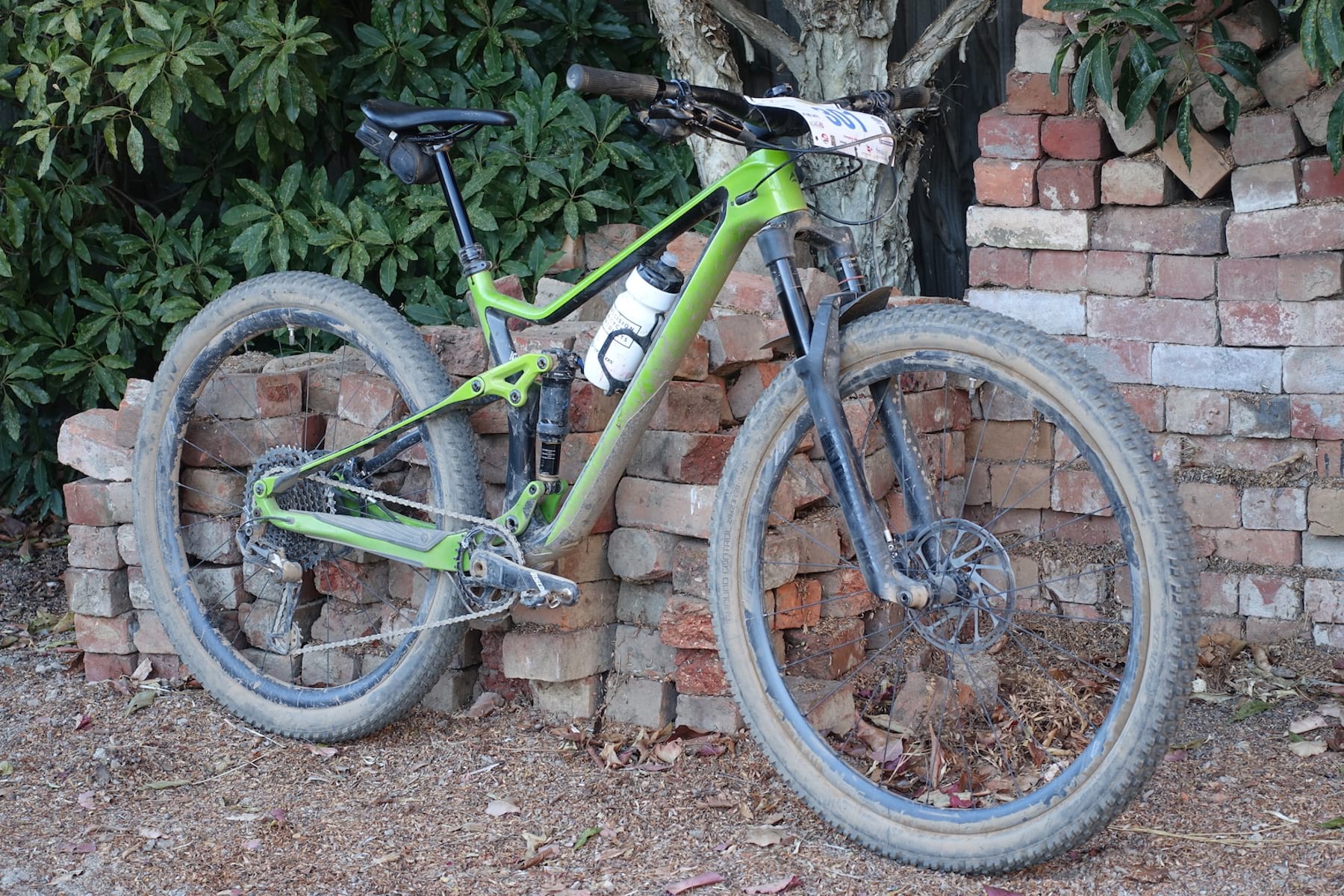
The One-Twenty may have had a little more travel and mass to it than most of the other race bikes (many were on lightweight carbon hardtails), but I was glad to have had the additional comfort and responsive suspension for tackling the seriously rocky racecourse.
It’s also a comfortable bike to pilot on longer distance rides, since the spacious cockpit asks very little of you in terms of your body position and weighting. I did shift the saddle backwards on the rails, and I also slammed the stem to bring the grips closer to the ground. Otherwise for my 175cm height, the cockpit dimensions feel very natural.

Normally I’d complain about 760mm bars on a trail bike being too narrow, but on the One-Twenty they pair comfortably with the 60mm stem. And on some of the more natural, claustrophobic singletrack I’ve been riding lately, it’s also nice not smashing my knuckles while shooting through narrow tree gaps.
Speaking of, the grips are superb. The have a subtly tapered profile, and soft rubber with an angled tread pattern that increases traction when you throttle backwards. I know it might seem small, but as one of the major contact points with the bike, it’s nice to see Merida pay attention to a pair of grips. Less attention has been paid to the Prologo saddle though, which is quite awful.
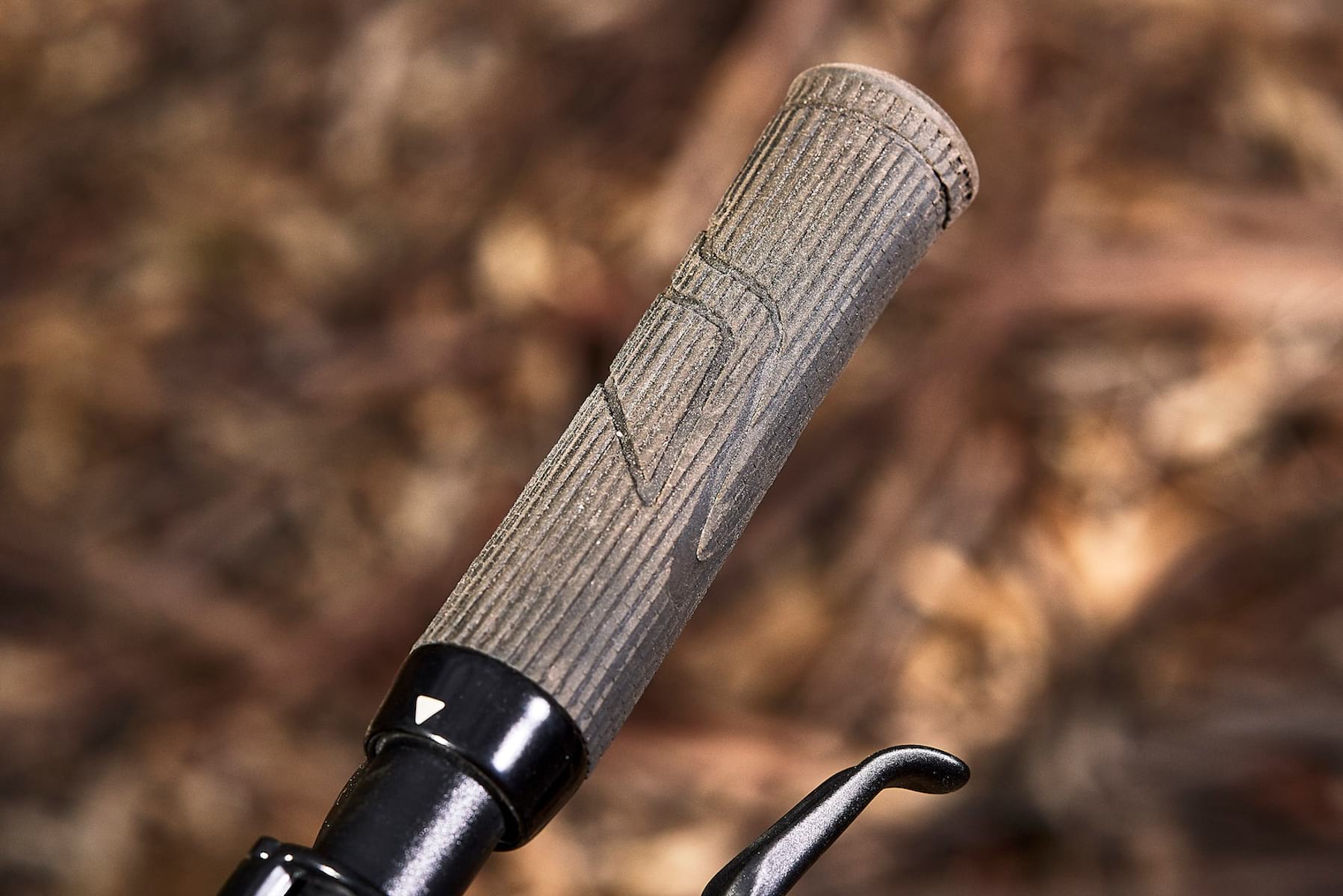
As race-prep, I changed the stock rubber for a set of 2.3in Specialized tyres – a Ground Control on the front and a Fast Trak on the back, which made a big difference to the bike’s rolling speed. I also swapped the stock saddle for the superb Ergon SM Pro. Otherwise everything else stayed stock.
Speaking of racing, it’s worth noting that Merida Factory Team actually raced the One-Twenty at this year’s Cape Epic in South Africa. Instead of taking the lighter Ninety-Six, José Antonio Hermida and Joaquim ‘Purito’ Rodríguez chose the One-Twenty setup for the eight-day stage race. The bike was slightly modified with a shorter-stroke shock to reduce the travel, and they also ran a 120mm fork on the front. Along with carbon bling and lightweight wheels, their race bikes weighed just 10.7kg, which gives you an idea of what’s possible with this versatile chassis.
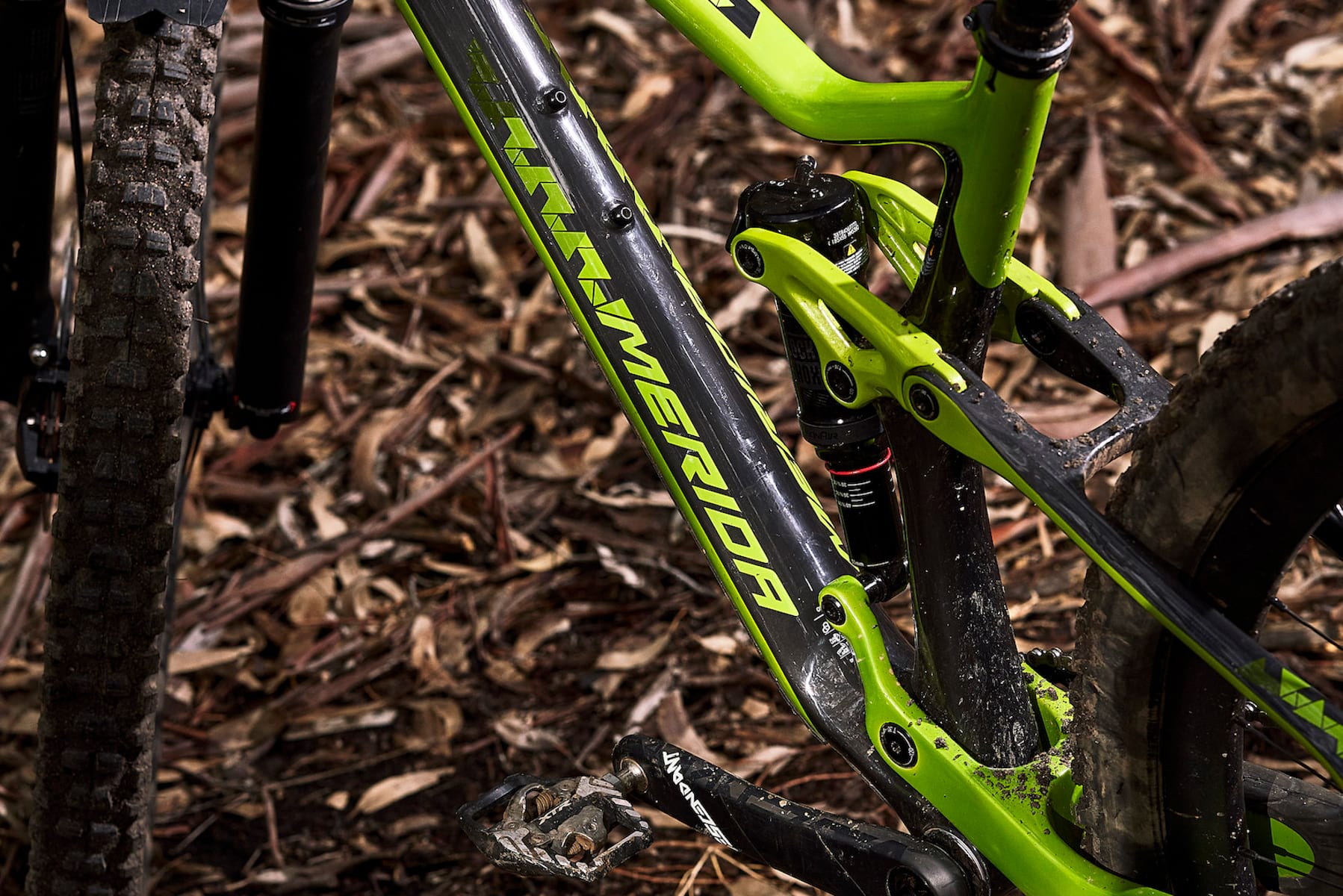
Component Notes
For the large part, I’d say it’s a job well done for the product manager at Merida. The One-Twenty 8000 not only has a well-engineered frame, it also has a really well thought out build kit.
The Minion DHR II remains as one of my favourite aggro trail tyres, and it’s a superb, confidence-inspiring choice for the front of the One-Twenty. The Forekaster keeps things faster rolling out back, where its debatable traction in loose conditions can be tolerated. However, it took just the first 5km before I put a hefty snakebite into the sidewall and bead. I stuck on a tube patch on the inside of the tyre over the two small holes, and so far it seems to have held up.
With outstanding power and control, SRAM Code RSCs deserve to be spec’d on more trail bikes. The only downside are the stock metal brake pads, which tend to be a bit noisier under lighter XC duties.
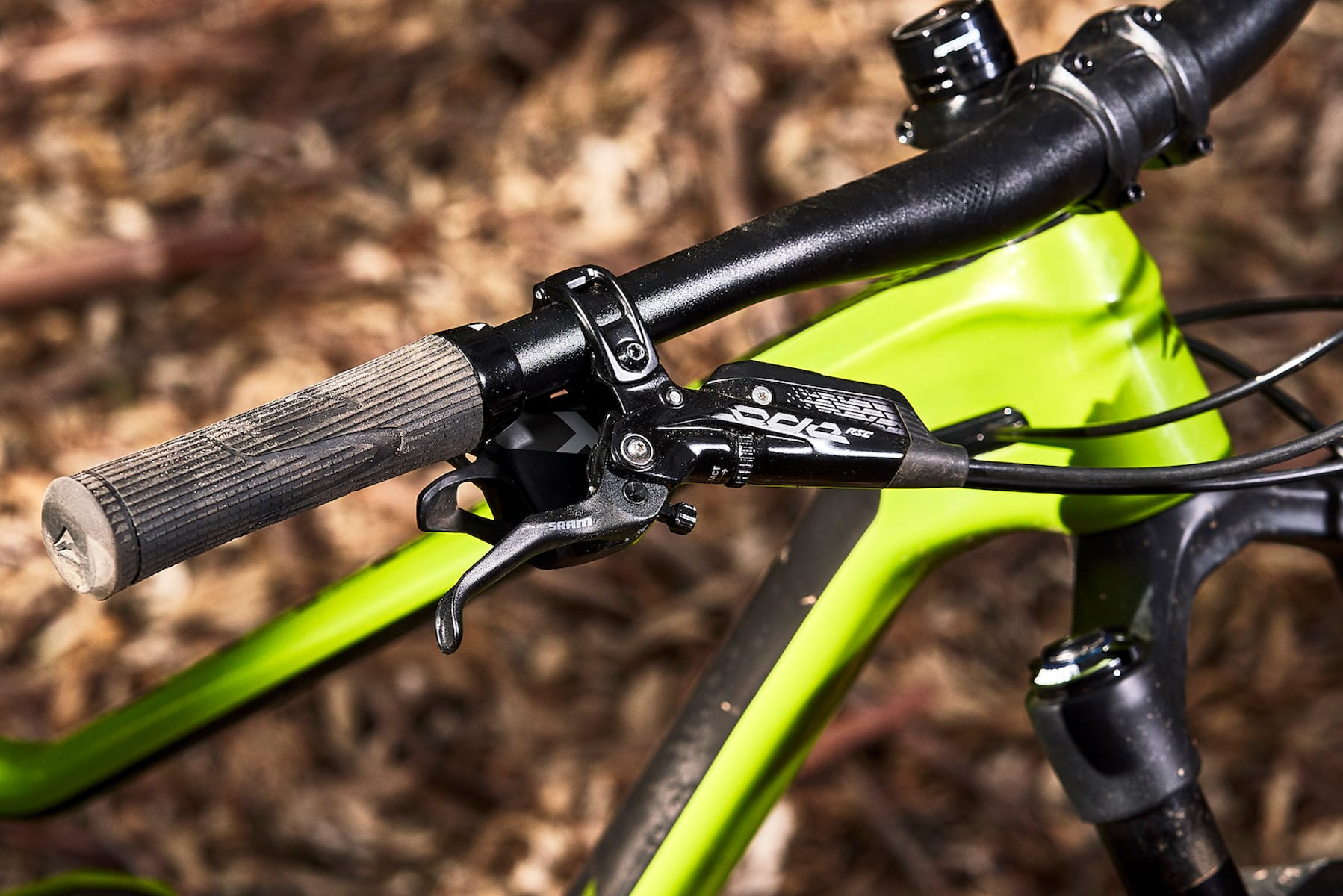
The KS Southpaw lever deserves a mention for its wonderfully ergonomic paddle design, and I appreciated the quick action of the LEV post with its audible top-out thunk. Annoyingly, the post did develop some rotational play towards the end of testing though.
Otherwise there were very few creaks and groans from the One-Twenty throughout testing. Both the press-fit headset and BB bearings are still silent and smooth, and there’s no play to be found anywhere.
On that note, the entire back end of the One-Twenty is treated to sealed cartridge pivot bearings. This differs from some other XC/trail bikes on the market, like the Scott Spark, which mostly uses bushings to save weight and cost. Some of the pivot bolts do require a larger T30 torx key though, so make sure you equip your tool kit accordingly.
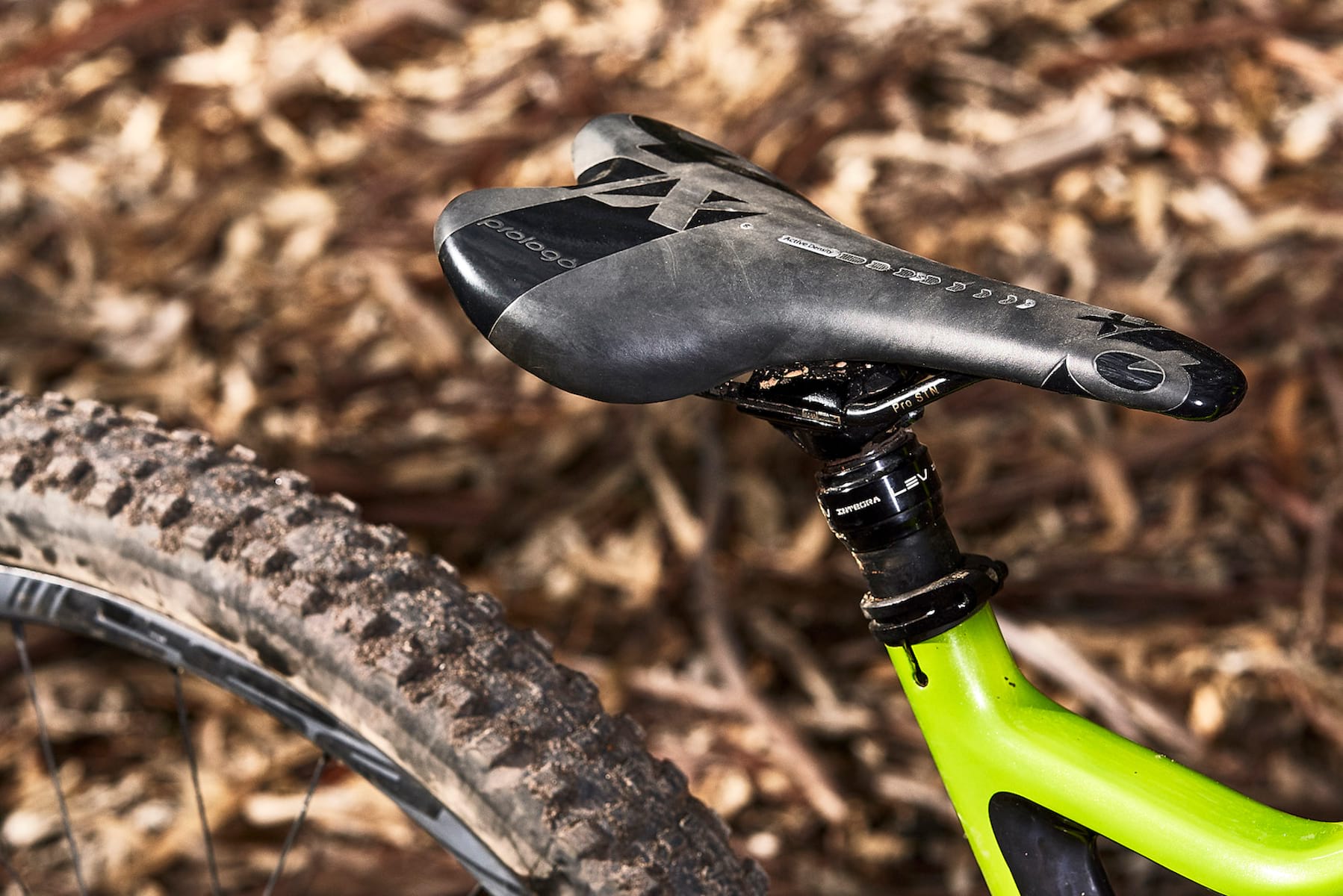
Three Things That Could Be Improved
- More generous water bottle clearance
- I’ve had good luck with KS LEV droppers in the past, so the play that developed in this one was a surprise, and a bummer. Also, KS really needs to flip the orientation of the gear cable around, and put the pinch bolt up at the lever
- Torx pivot hardware works fine, but is less likely to be found on a multi-tool
Three Things I Loved
- Supple and sporty rear suspension design
- The clean and well-engineered carbon fibre frame: light, stiff, and gimmick-free
- Confidence-inspiring SRAM Code RSC brakes are solid, easy to modulate, and hugely powerful
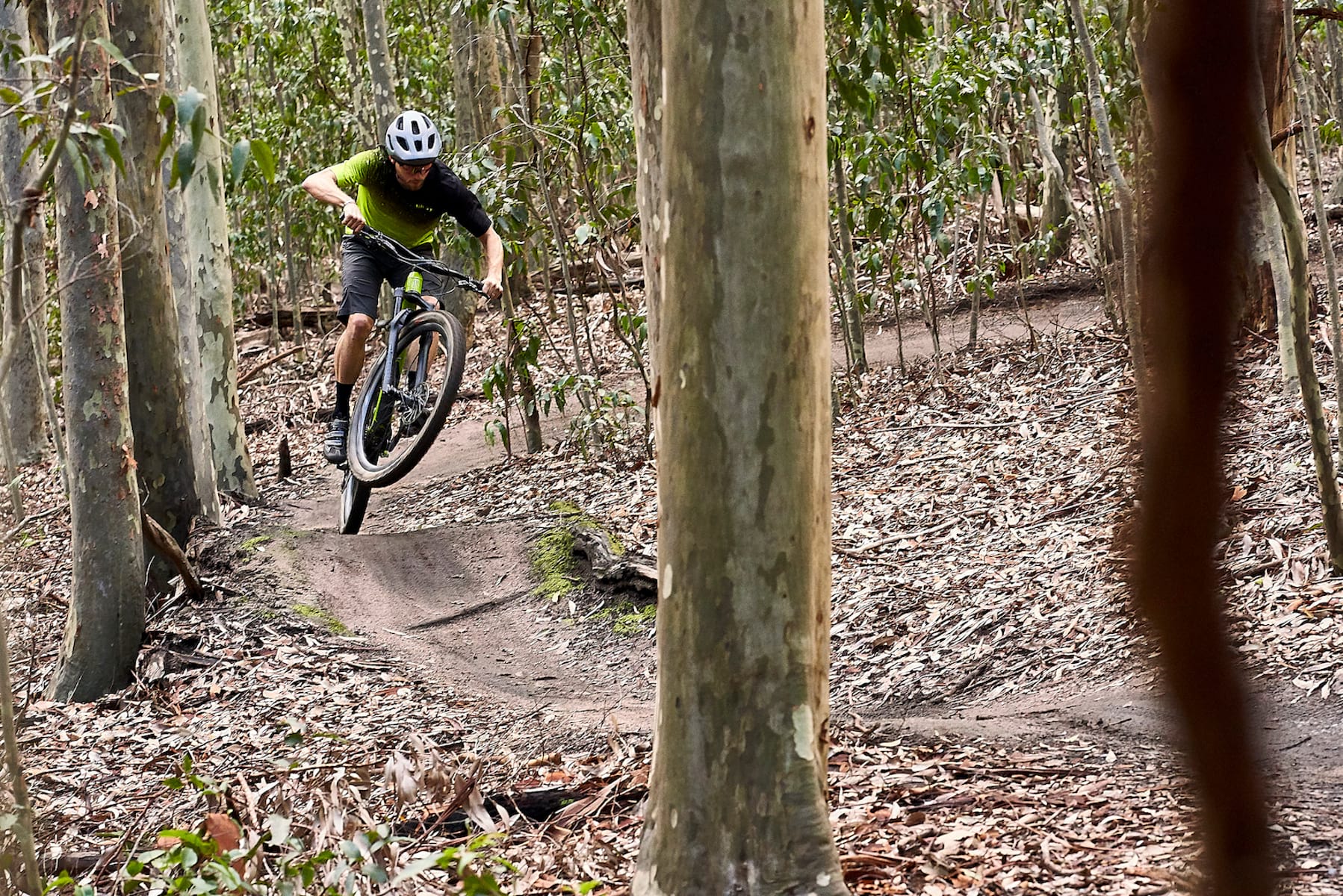
Overall
With its high quality carbon chassis, great suspension design, and contemporary spec package, the Merida One-Twenty stands as one of the most well-balanced trail bikes I’ve tested. The light and snappy carbon frame allow you to get up to speed quickly on the climbs, while the burly parts spec and active suspension mean you can maintain it on the descents. From the bottom to the top and back down again, it’s nimble, efficient, and just flat-out fun to ride.
Other brands in this class are admittedly pushing the geometry envelope quite hard, and attracting plenty of attention while they’re at it. In the new One-Twenty though, Merida has made a strong case for exercising a little restraint.
No, it isn’t overly radical, and it isn’t the most stable bike for hammering at warp speeds. Far from being a steamroller though, the One-Twenty handles more like a mid-engine sports car, with great control at both ends of the bike. And thanks to its responsive and intuitive handling, this is one approachable trail bike that’ll work for a wide range of riders.
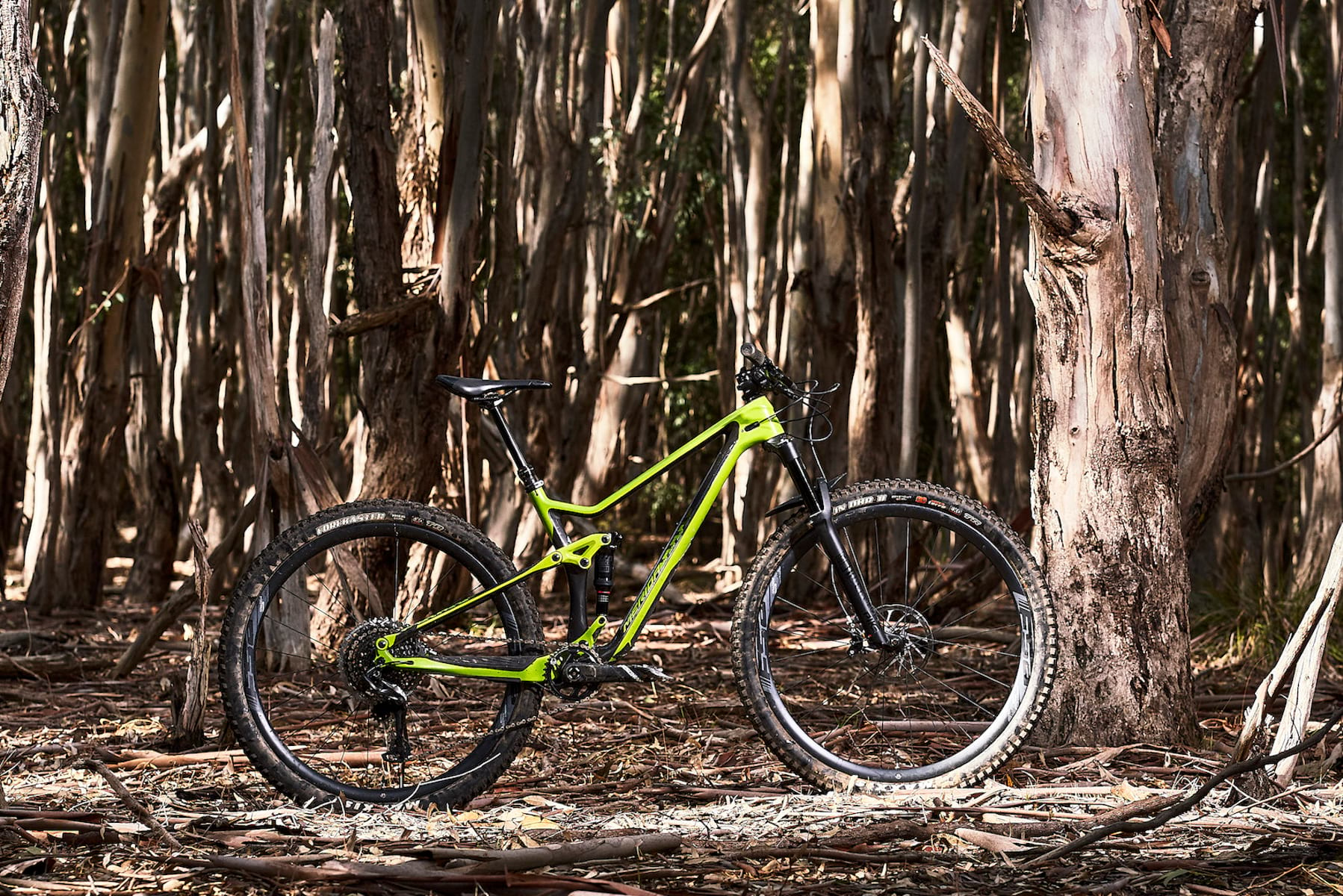
2019 Merida One-Twenty 8000 Specifications
- Frame // CF4 Carbon Fibre, 120mm Travel
- Fork // RockShox Pike RCT3, 130mm Travel
- Shock // RockShox Deluxe RT, 185x55mm, Trunnion Mount
- Hubs // FSA Gradient LTD, 110x15mm Front & 148x12mm Rear
- Rims // FSA Gradient LTD, 29mm Internal Width, Tubeless Ready
- Tyres // Maxxis DHR II 3C MaxxTerra EXO 2.4in WT Front & Forekaster EXO 2.35in Rear
- Crankset // SRAM Descendant, 32t X-Sync 2 Chainring
- Rear Mech // SRAM XO1 Eagle, 12-Speed
- Shifters // SRAM XO1 Eagle, 12-Speed
- Cassette // SRAM Eagle, 10-50t, 12-Speed
- Brakes // SRAM Code RSC, 180mm rotors
- Stem // Merida Expert TR, 60mm Length
- Bars // Merida Expert TR, 20mm Rise, 760mm Wide
- Grips // Merida Lock-On
- Seatpost // KS LEV Integra, 150mm Travel
- Saddle // ProLogo Nago X20
- Size Tested // Medium
- Sizes Available // Small, Medium, Large, X-Large
- Confirmed Weight // 12.69kg / 27.92lb
- RRP // £6,000 / $6,999 AUD






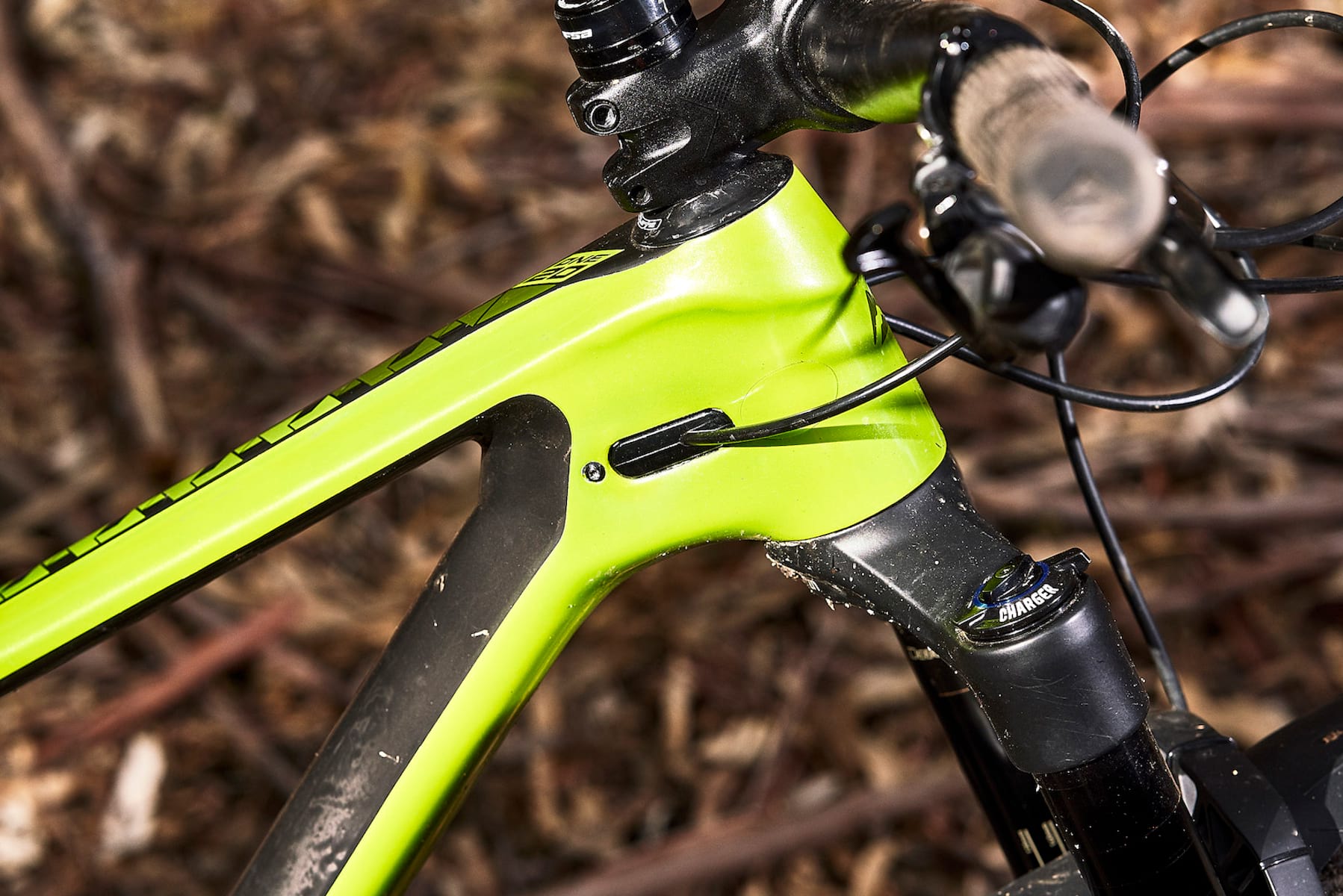
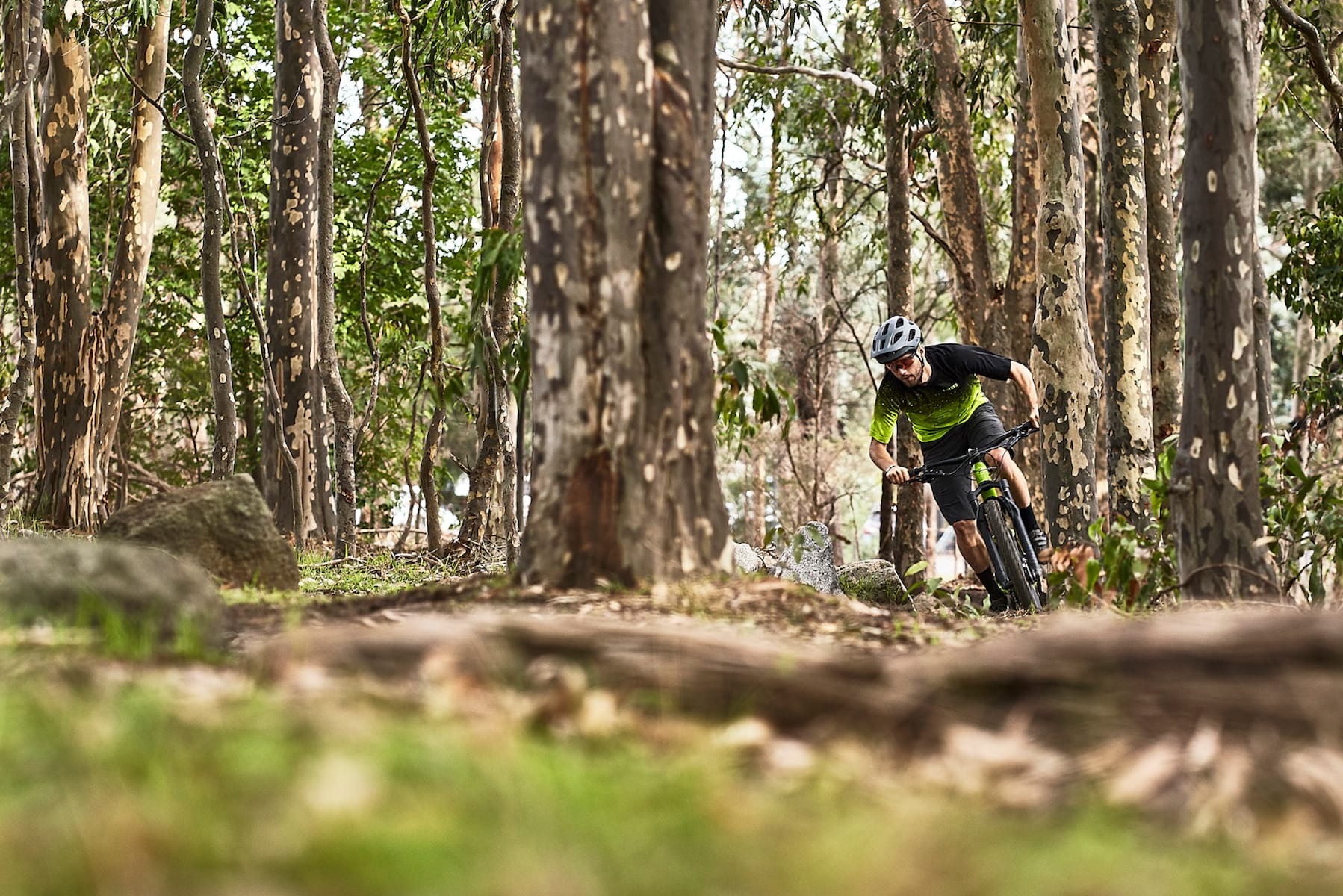
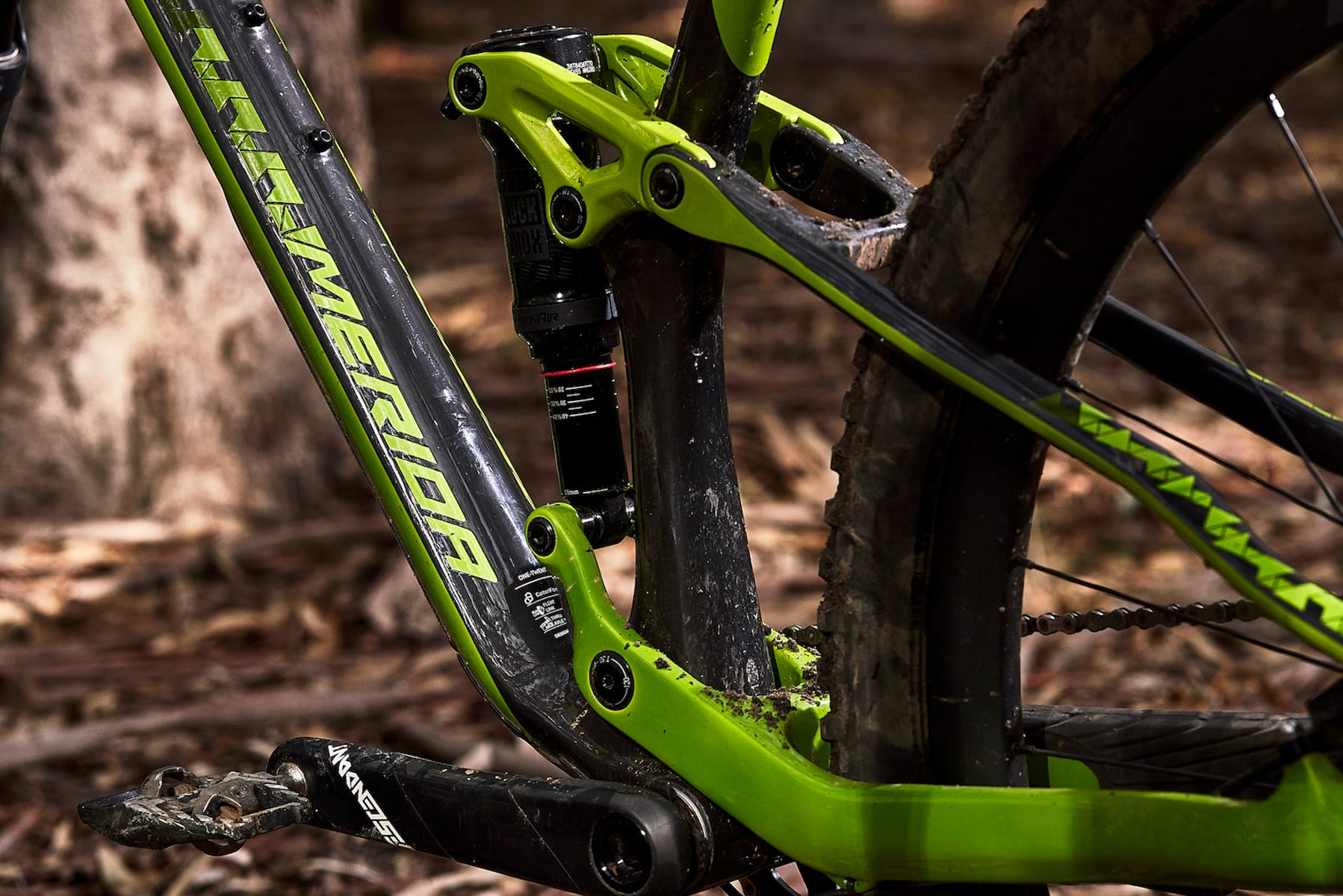
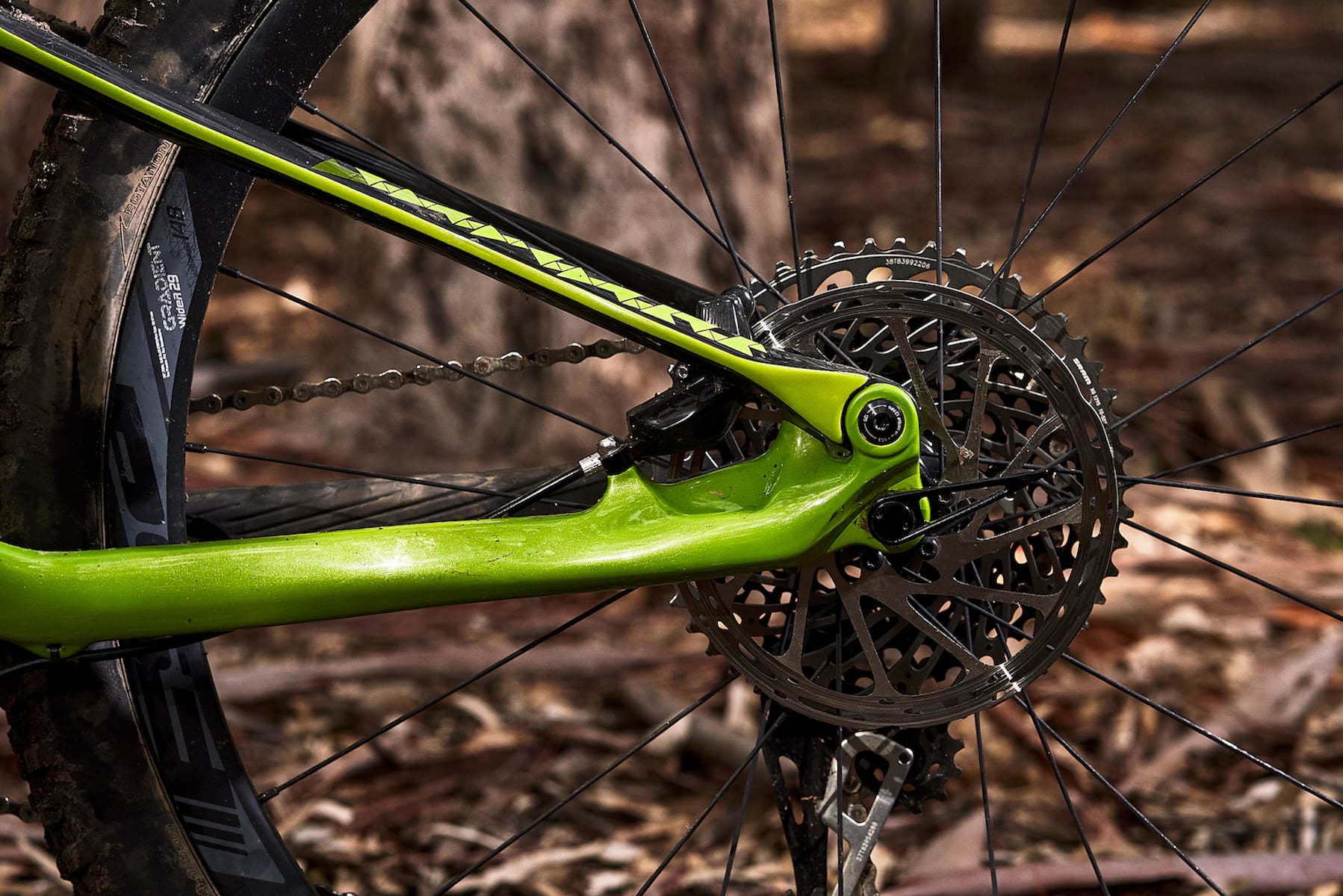
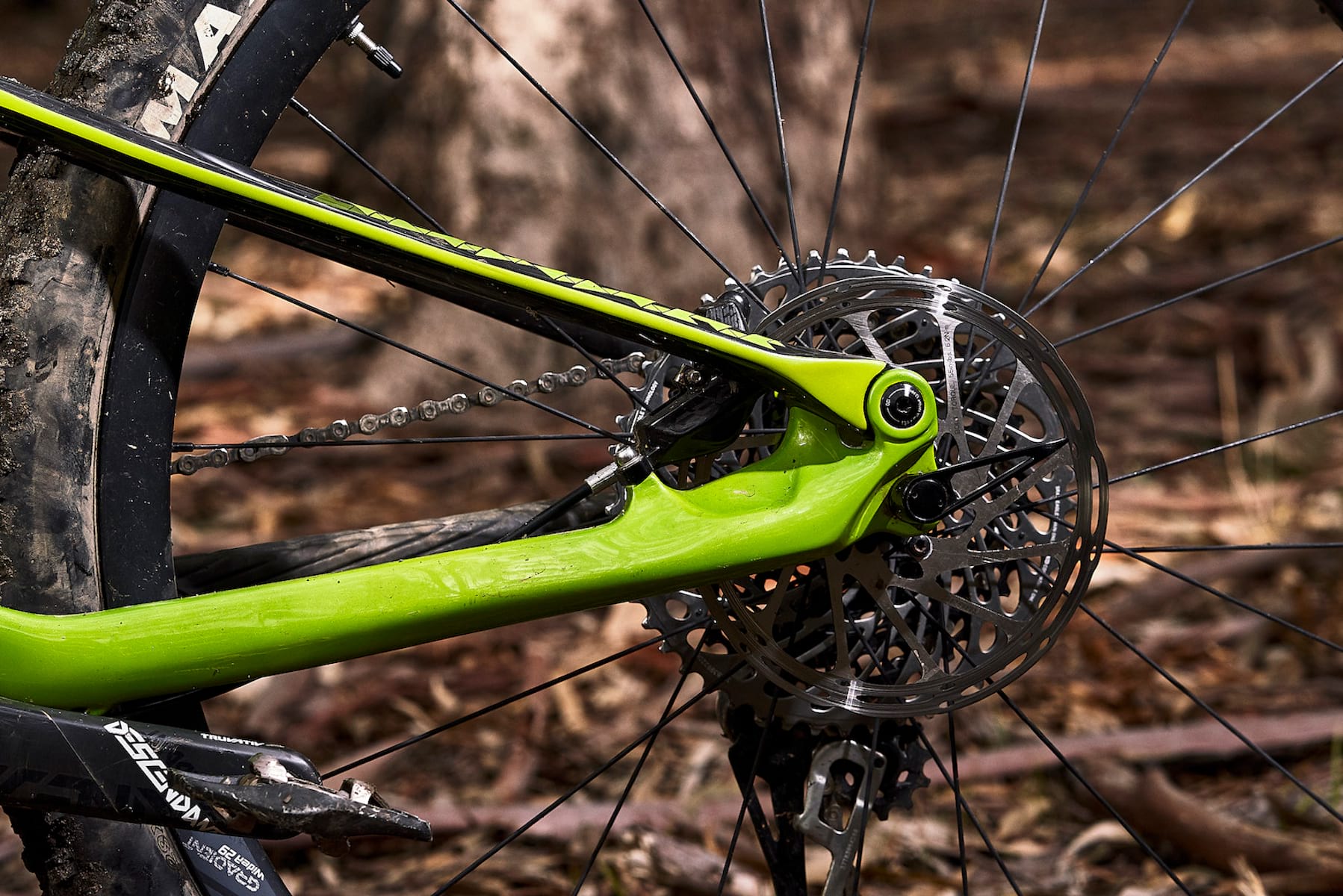
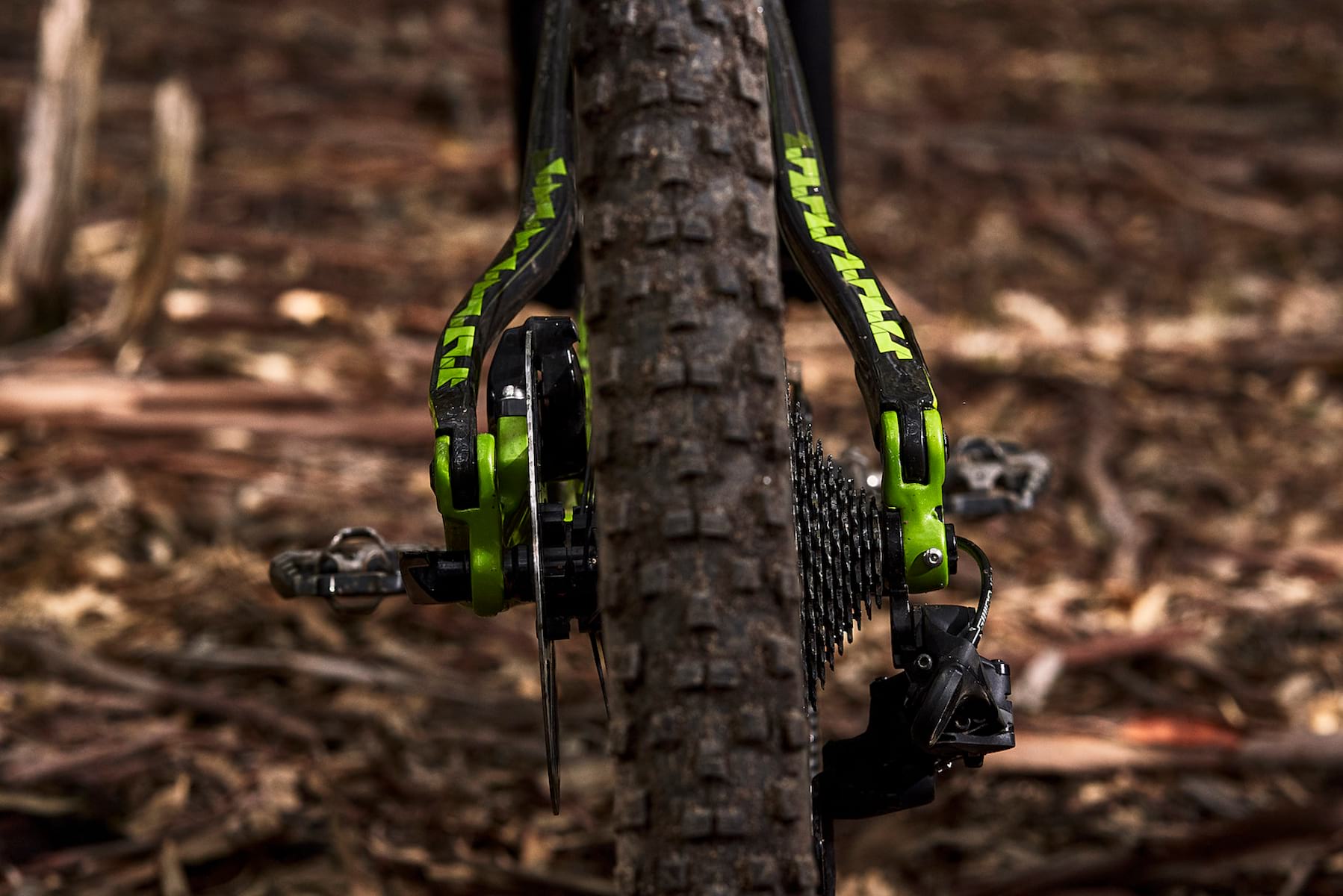
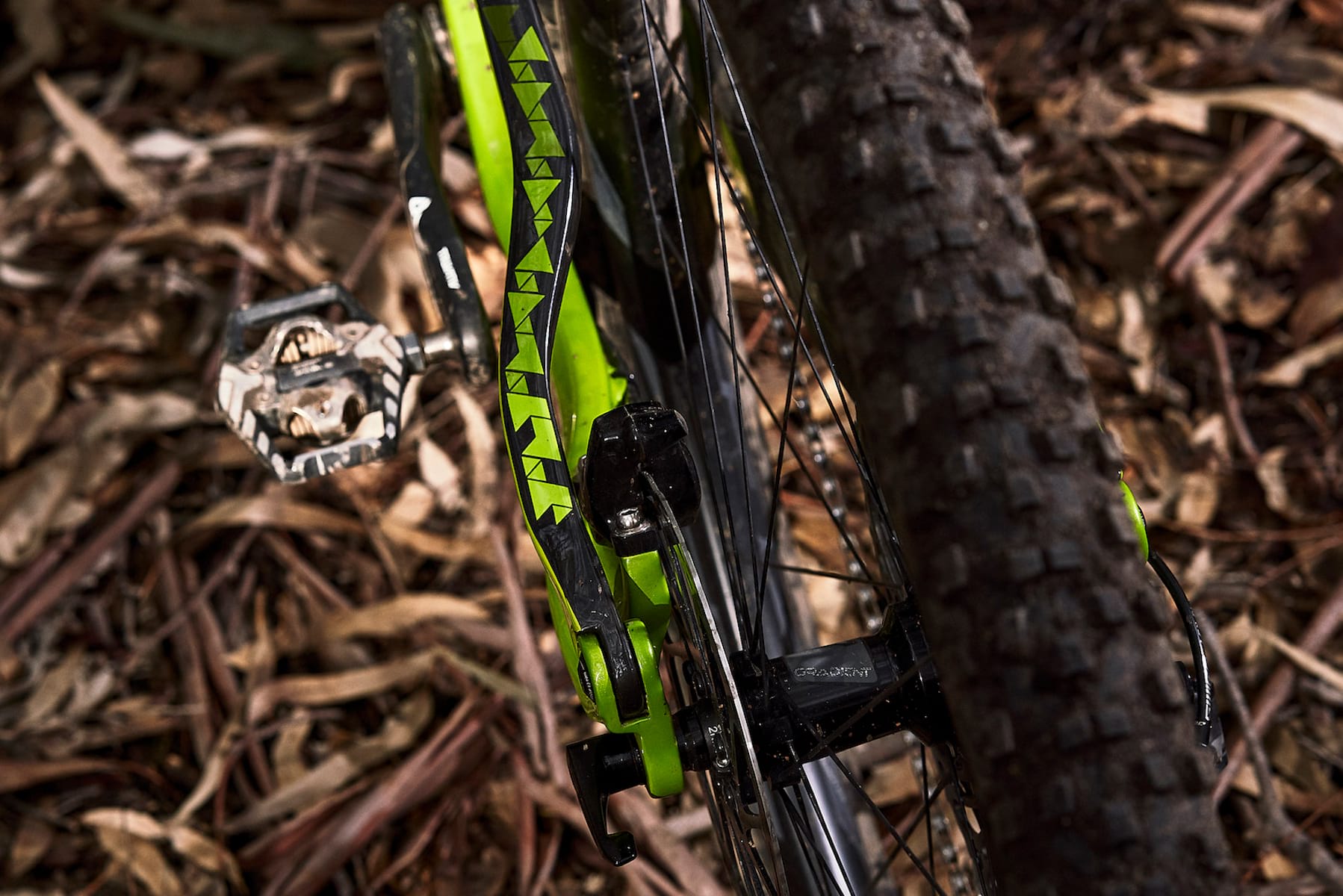
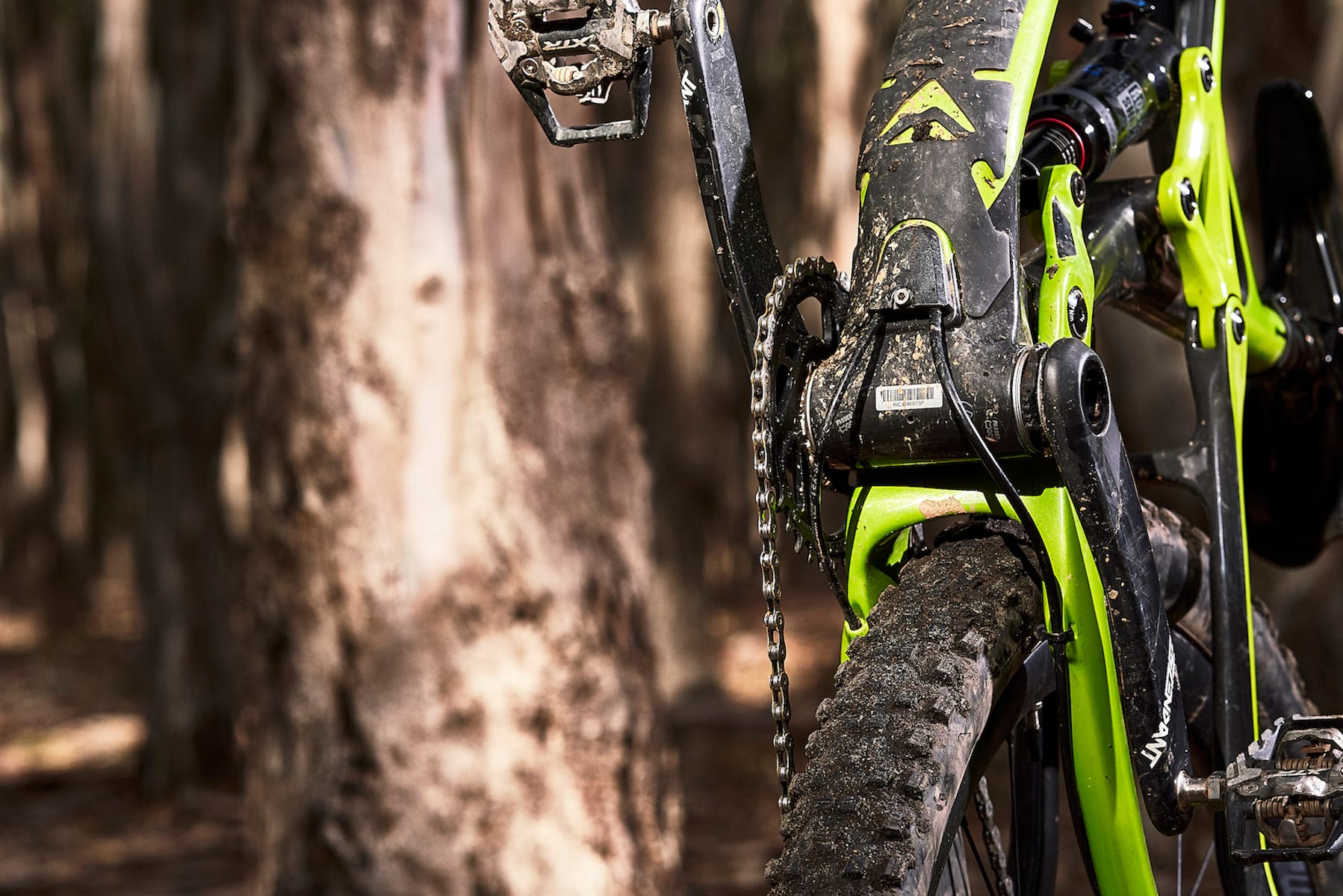
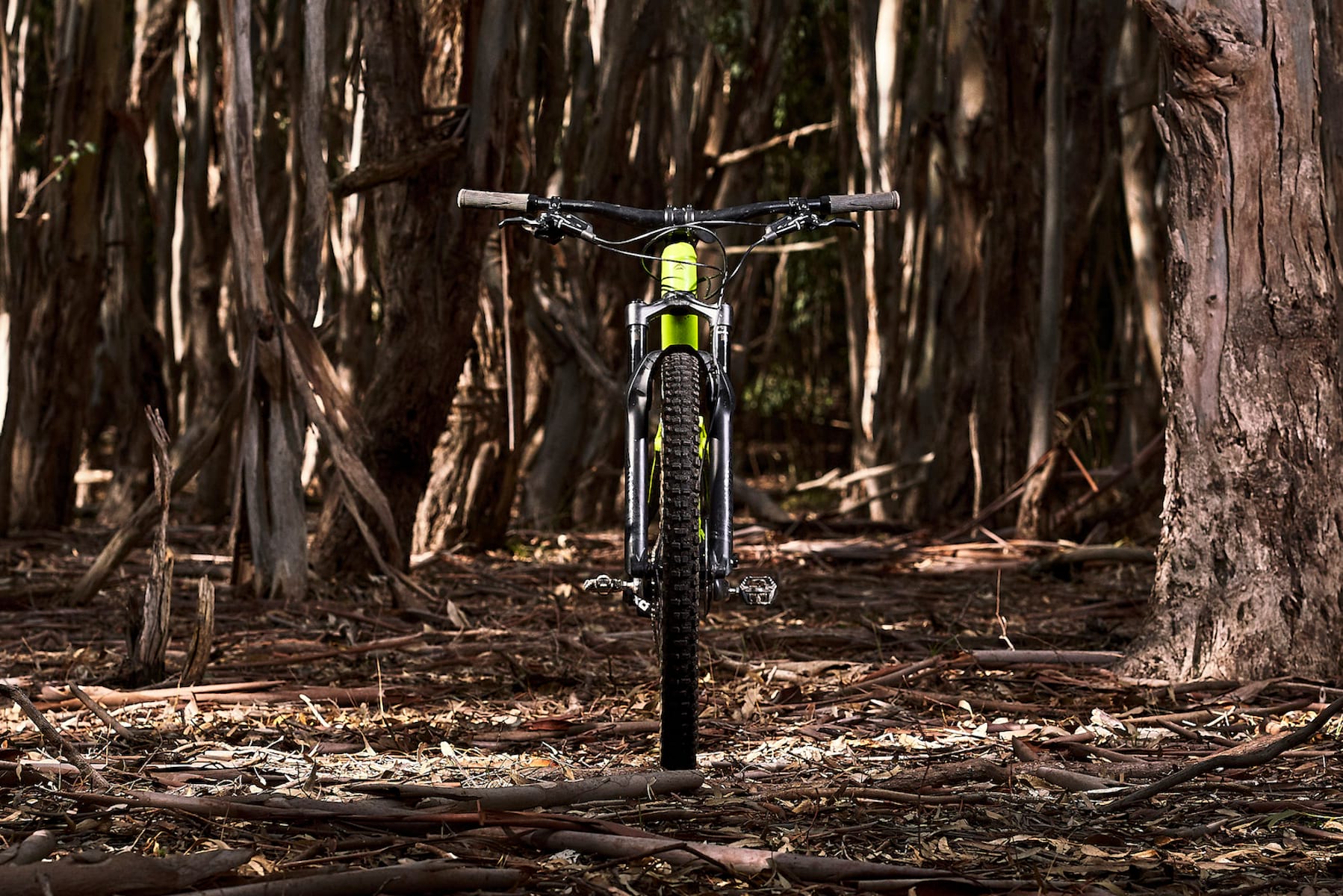
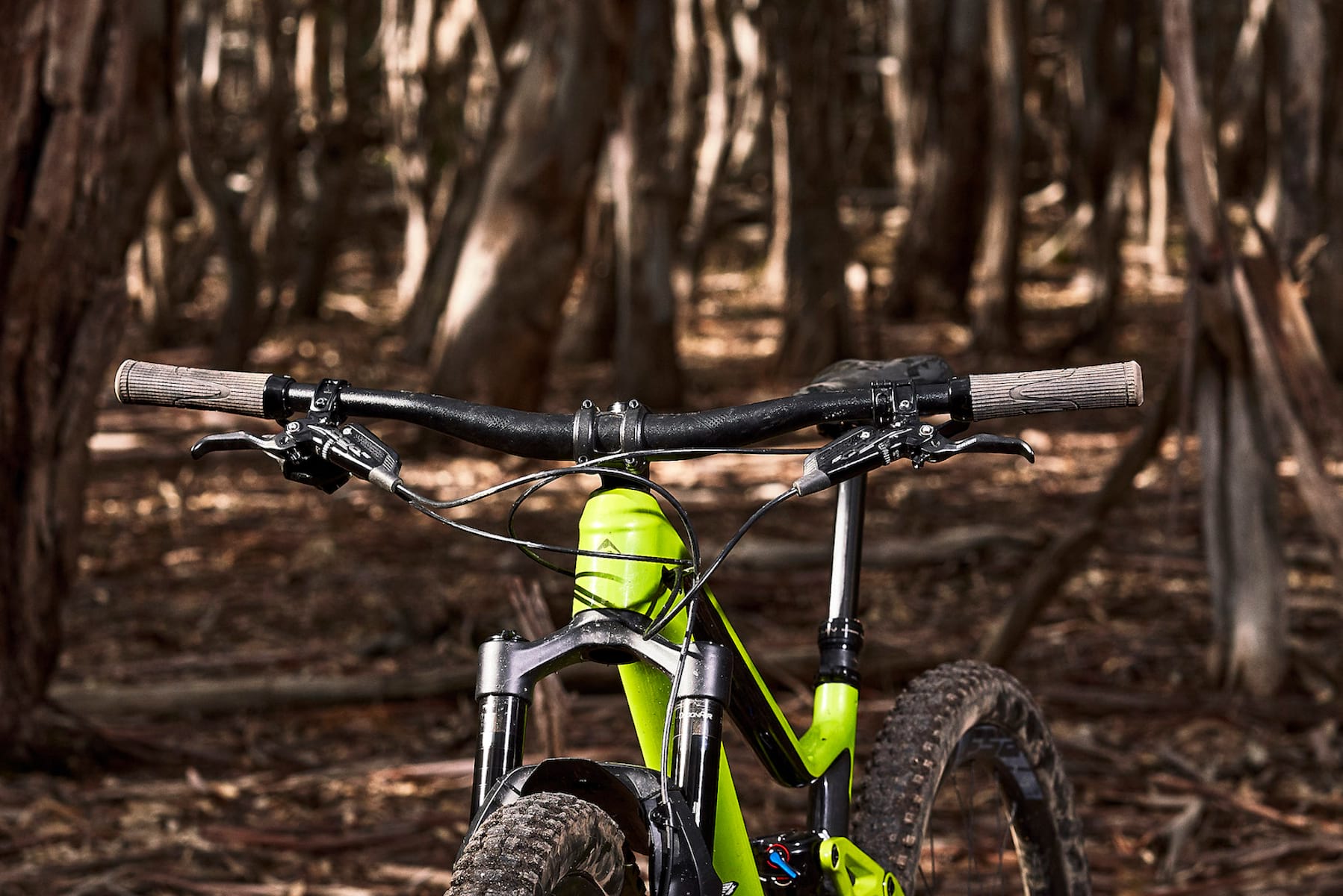
Is that pricing information correct? £6k vs $7k? That means if you purchase in Aus you get it for £3,750 ish. So you could fly to Australia, buy the bike, have a nice warm cycling holiday, then package it up, take it to the airport and get the GST knocked off ($700 or £350) and fly back to the UK with your new wheels, and holiday in the sun and all had for less than the UK shop floor price. That’s living.
@markmb – Yup, that pricing is correct! Merida is pretty aggressively priced in Australia, and makes that One-Twenty 8000 quite extraordinary value for an IBD bought bike.
Right – you book your flights and I’ll get the beers on ice 🙂
[ST Wil]
Love all these short travel reviews! I’ve been seriously considering a Stumpjumer ST even though it’s similarly restrained in geometry – something about high stack and low BB just works for me – I liked it way more than the normal Stumpjumper, even if I was faster on the descents according to Strava. I’d never thought I’d say that I’d prefer the technically slower bike, but heck, I ride for fun these days over outright speed – short travel feels fast!
@simonchan – Glad you’re enjoying them mate!
Funny you should say that about the Stumpy ST – I had exactly the same thoughts after I back-to-back tested the regular Stumpy and the Stumpy ST last year. I really liked how the ST bike hovered closer to the ground, even if there was less suspension.
[ST Wil]
Nice review Wil. Assume there’s a lot of traction technical climbing – wondering what it’s like on steep uphill stuff? Front end easy enough to keep down?